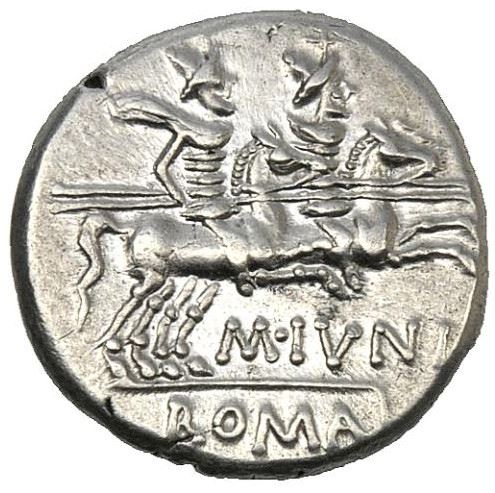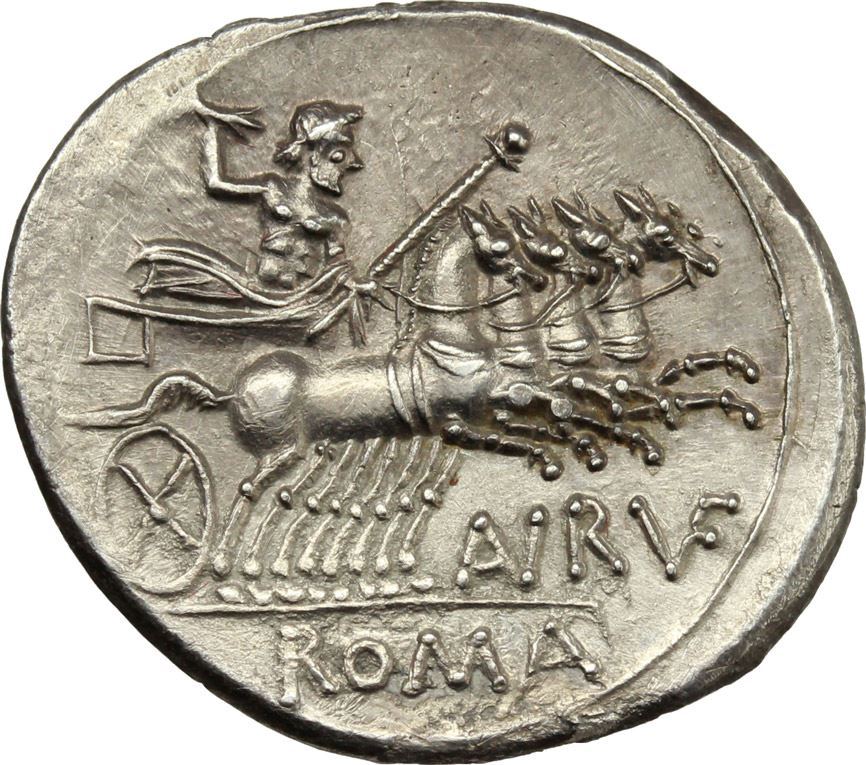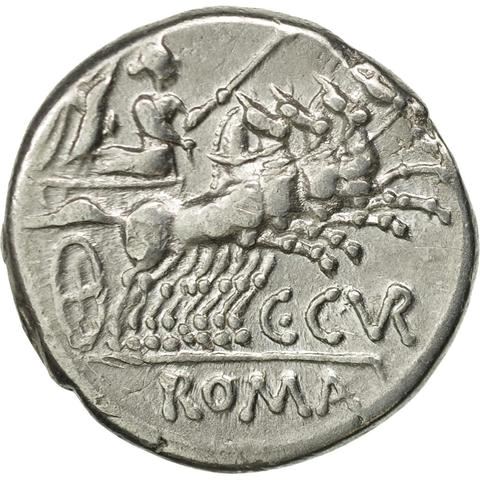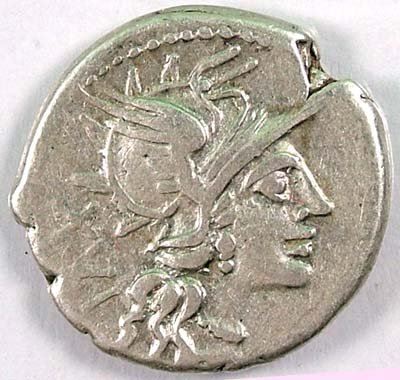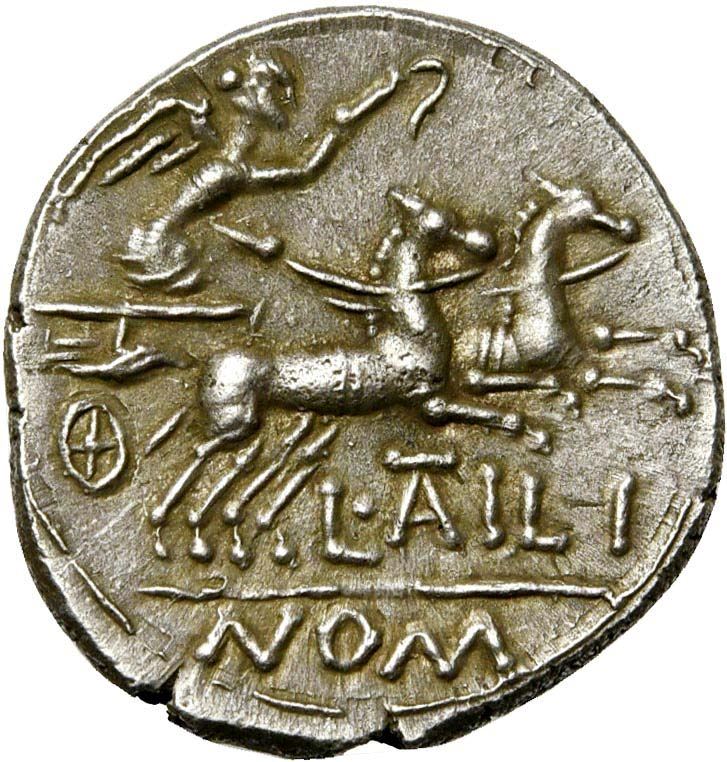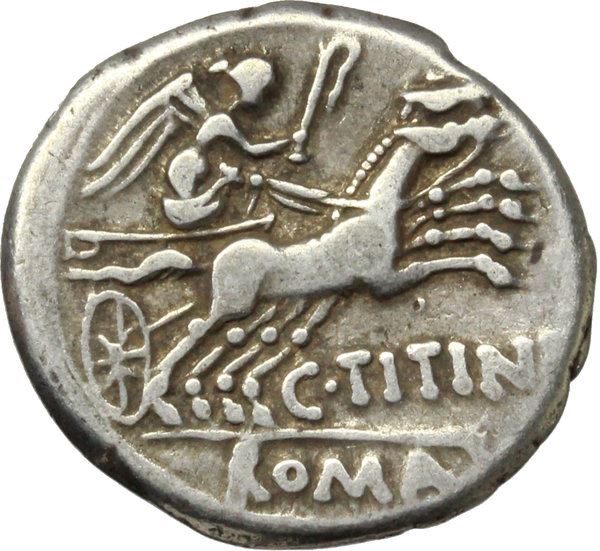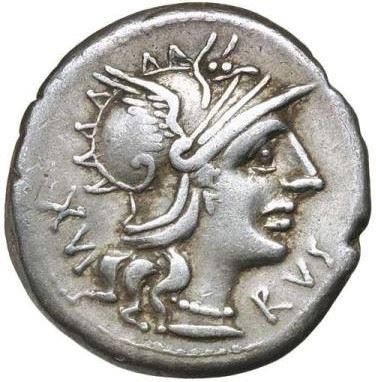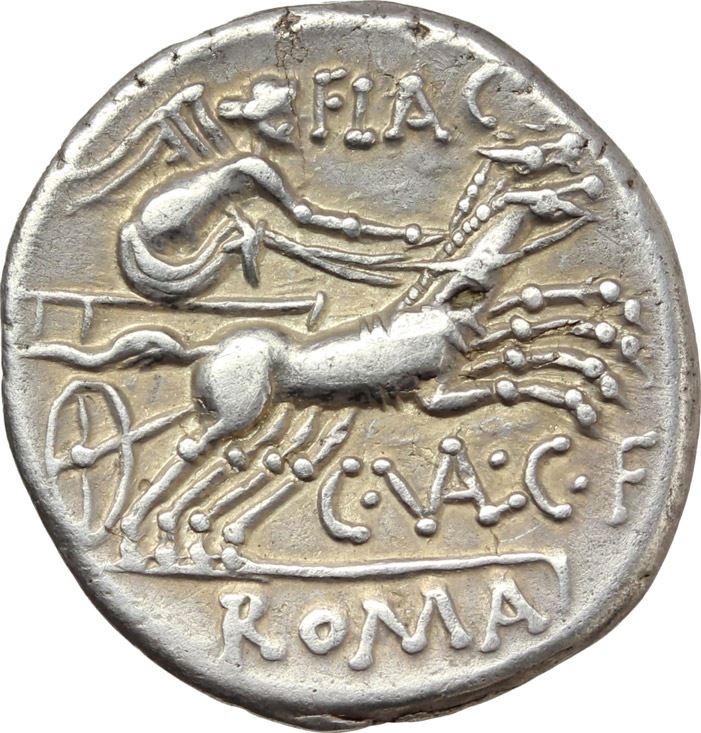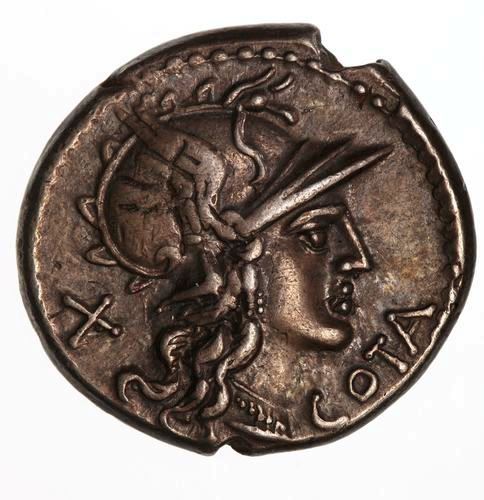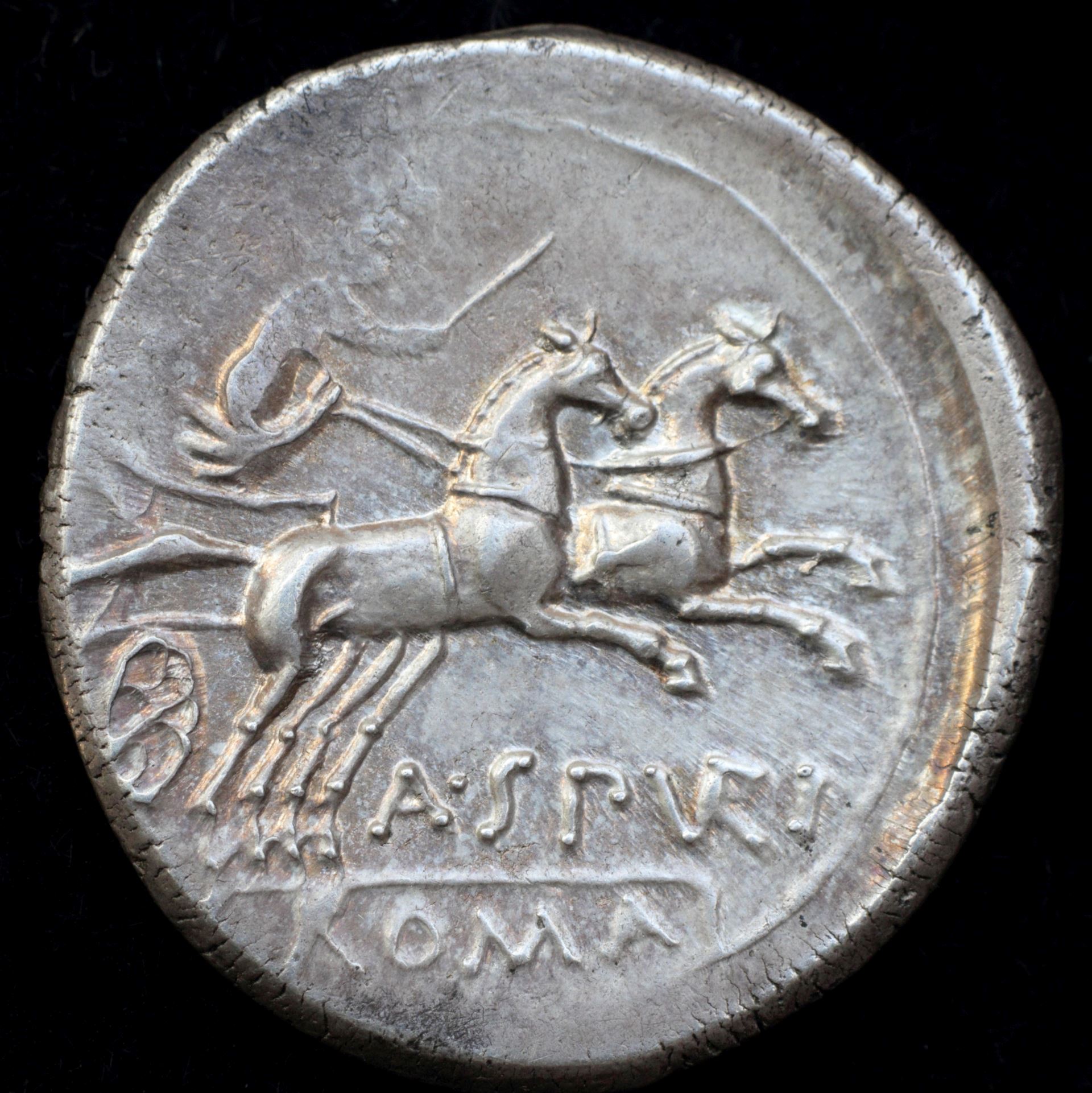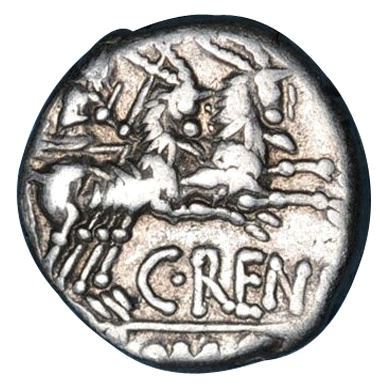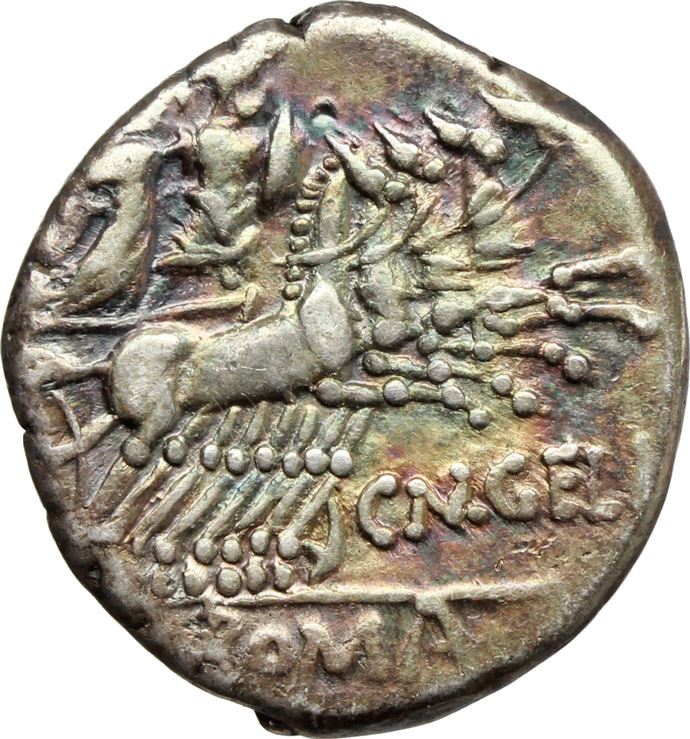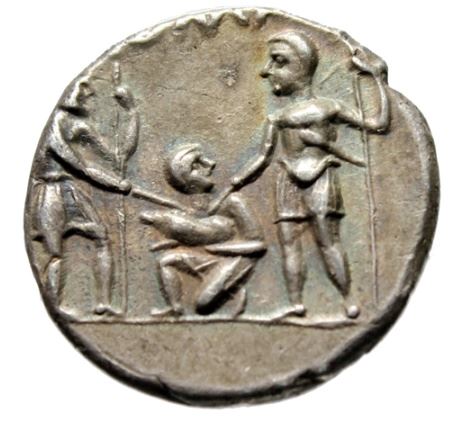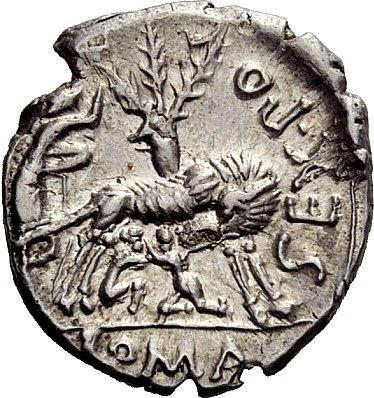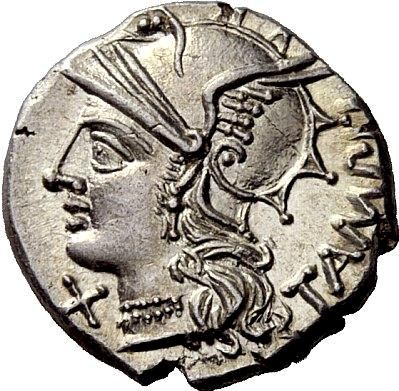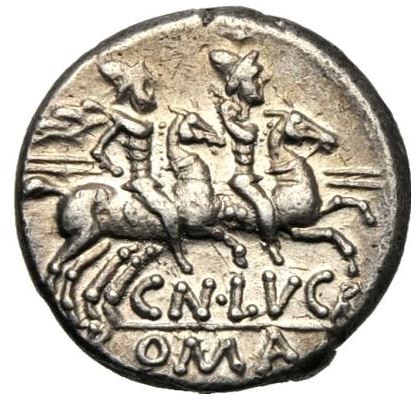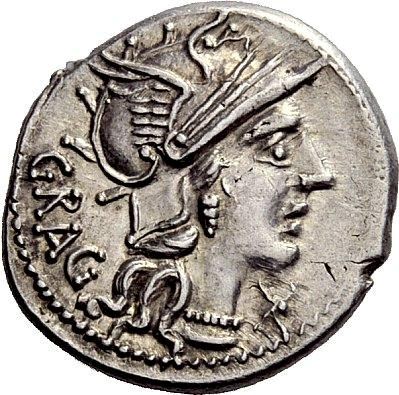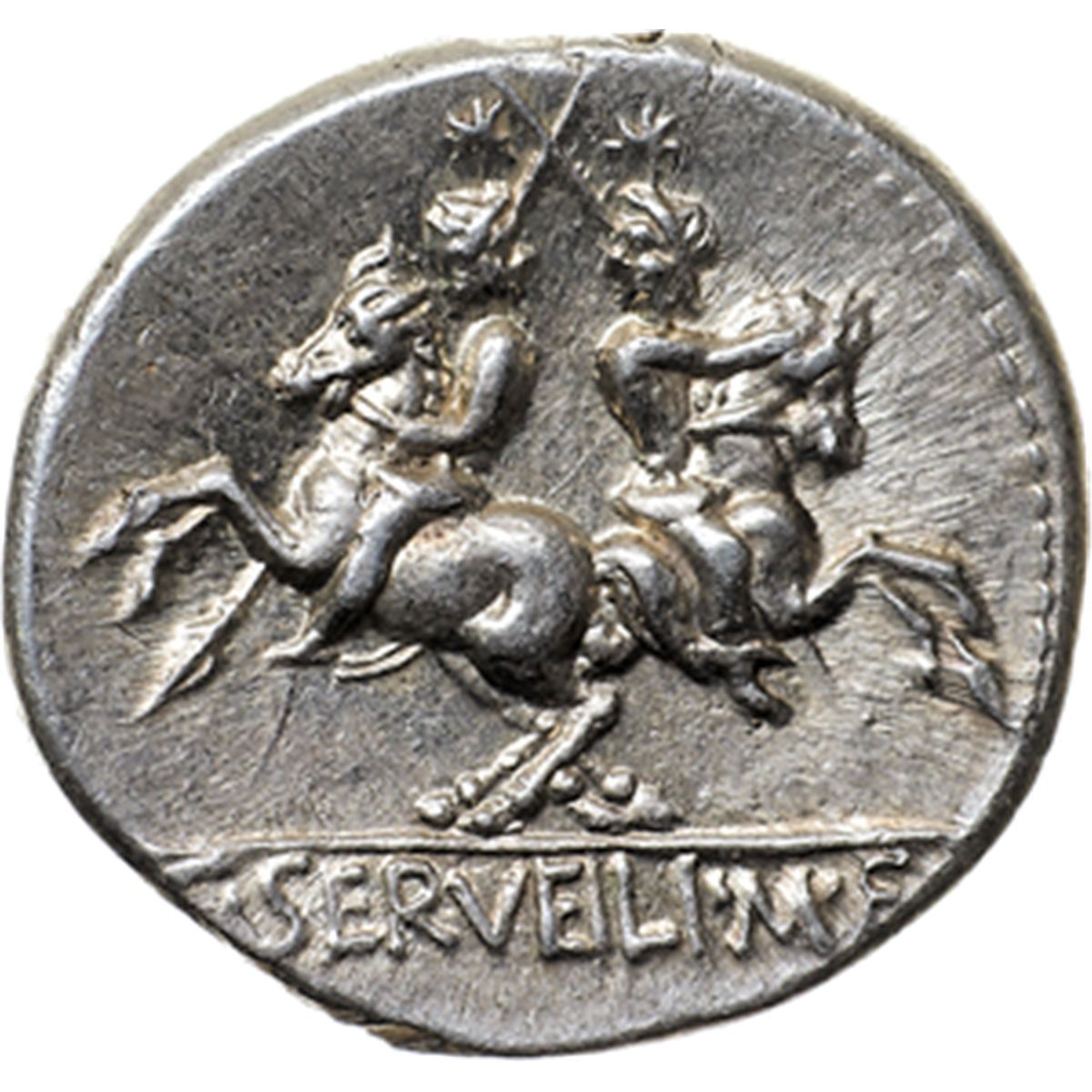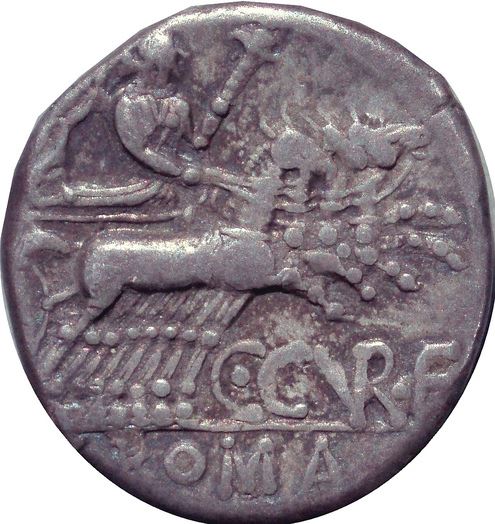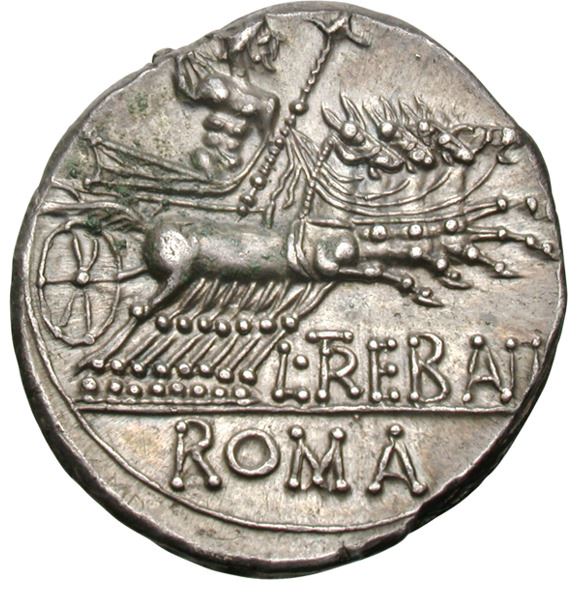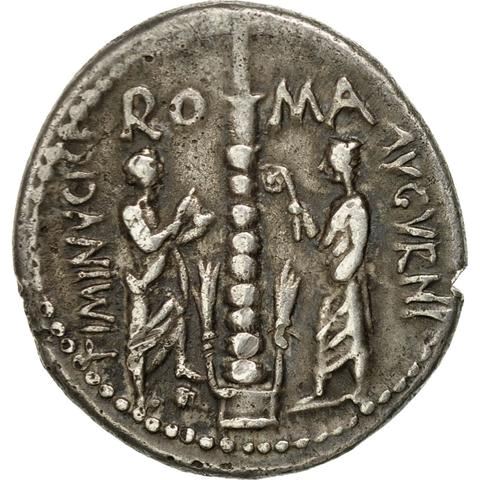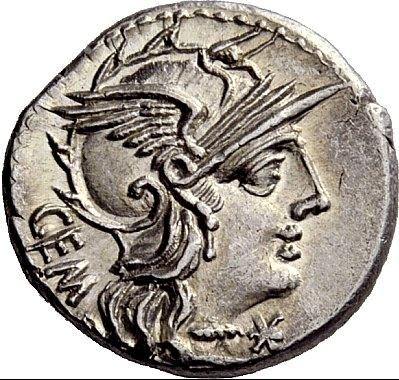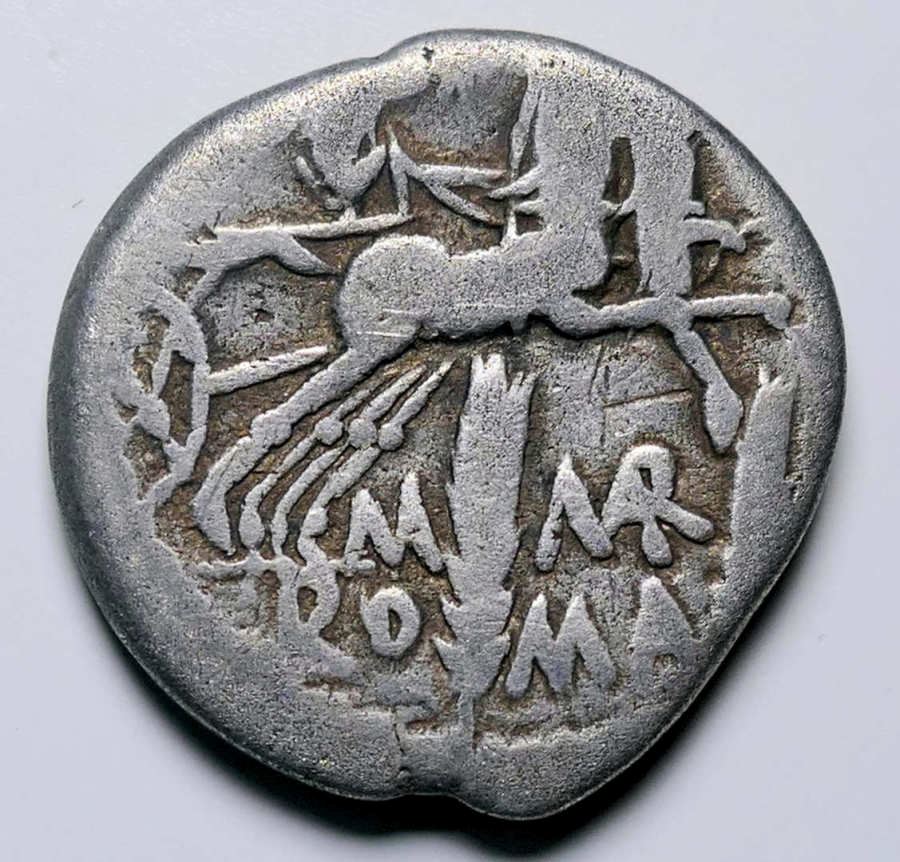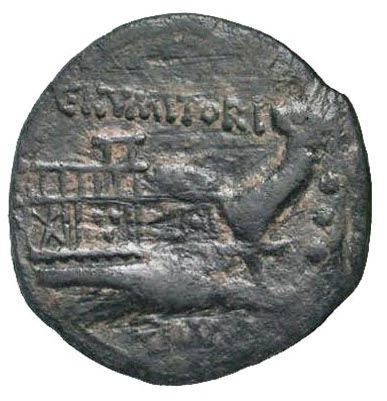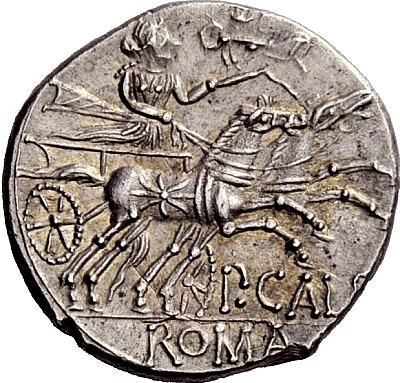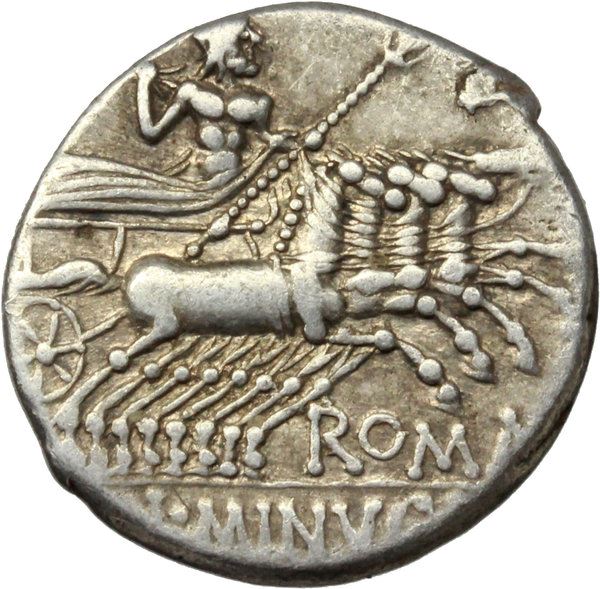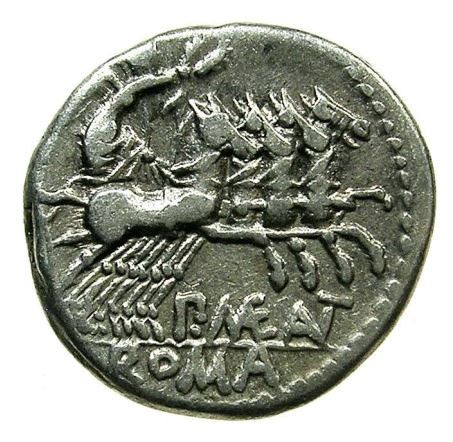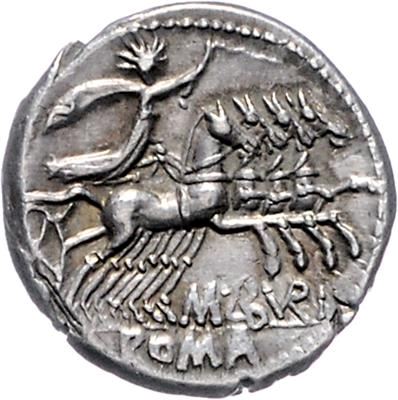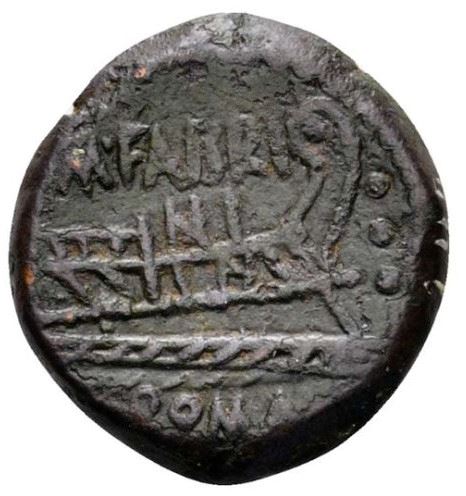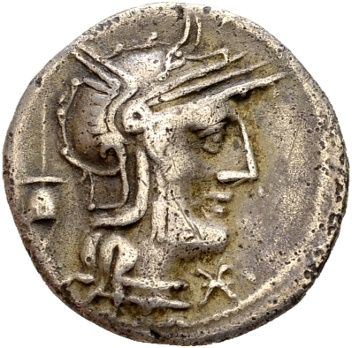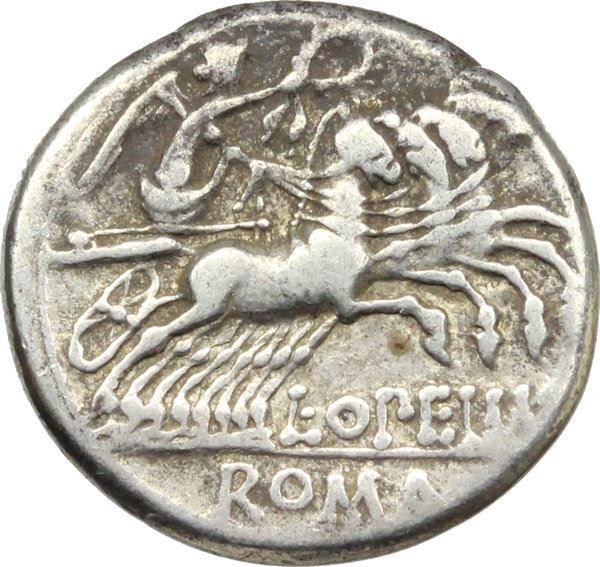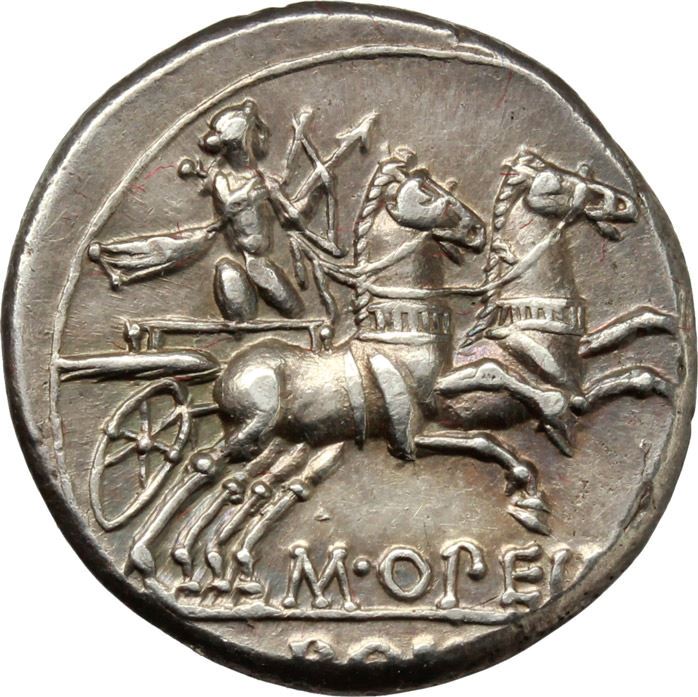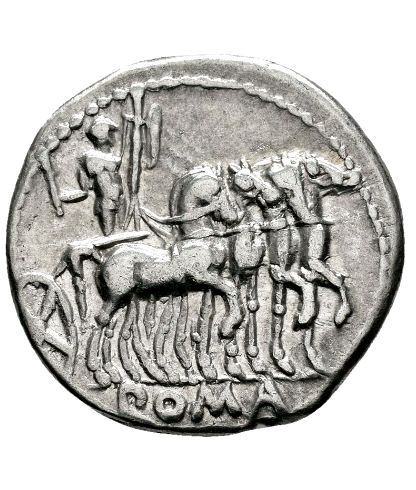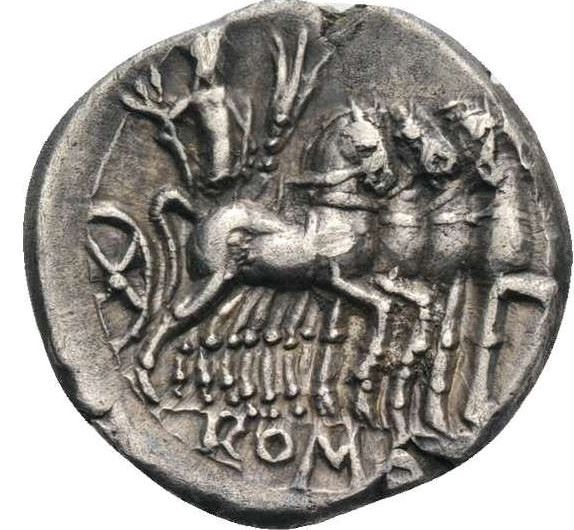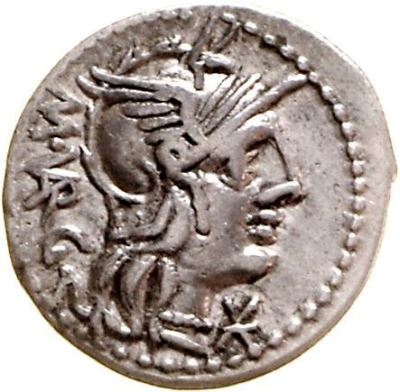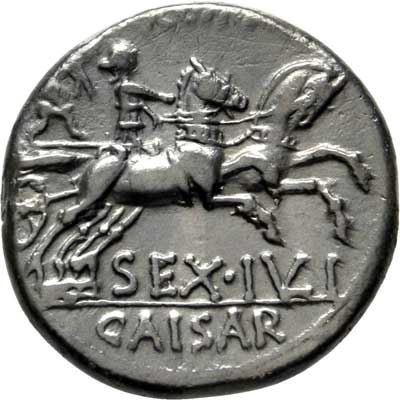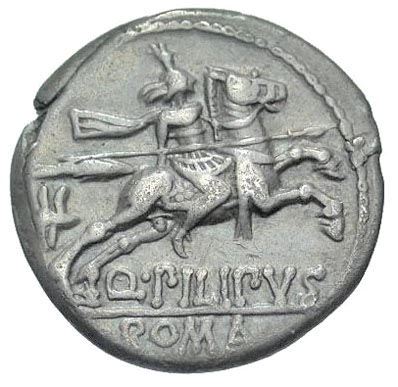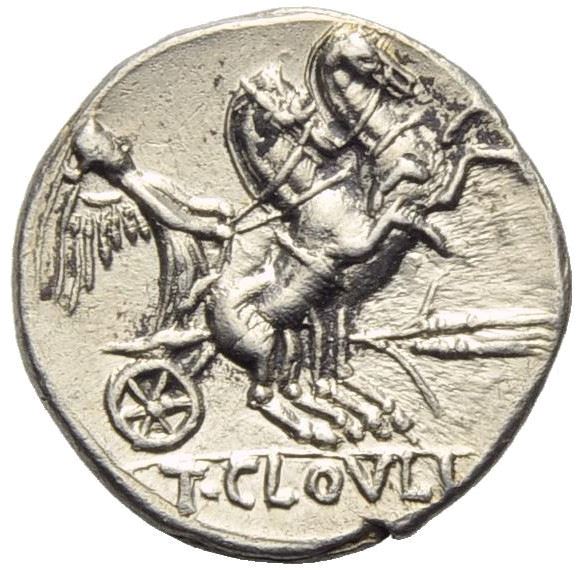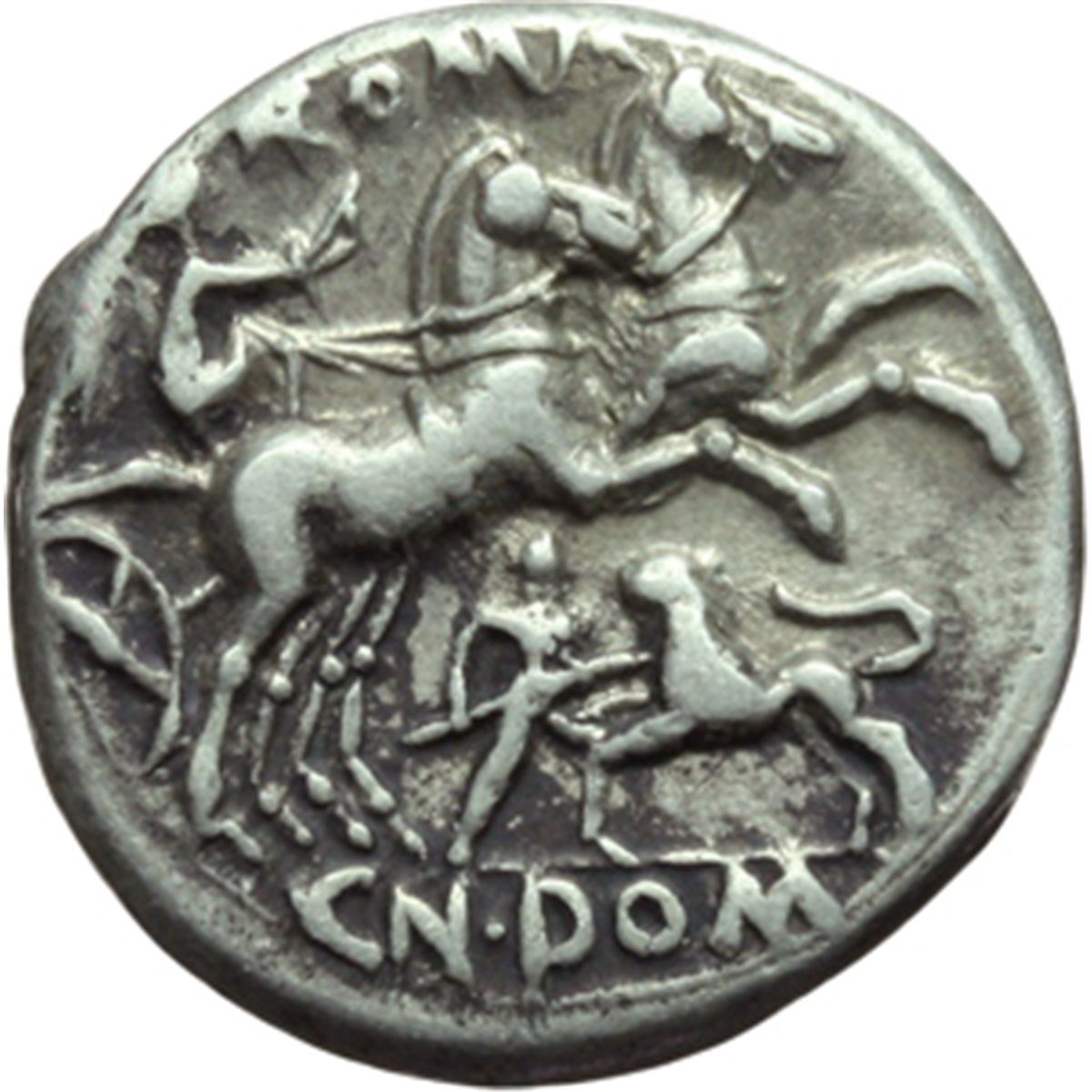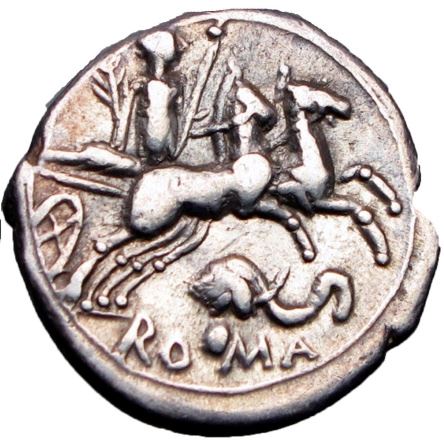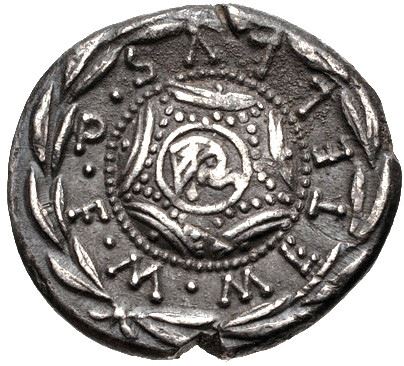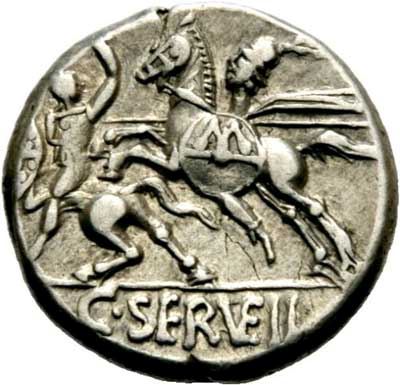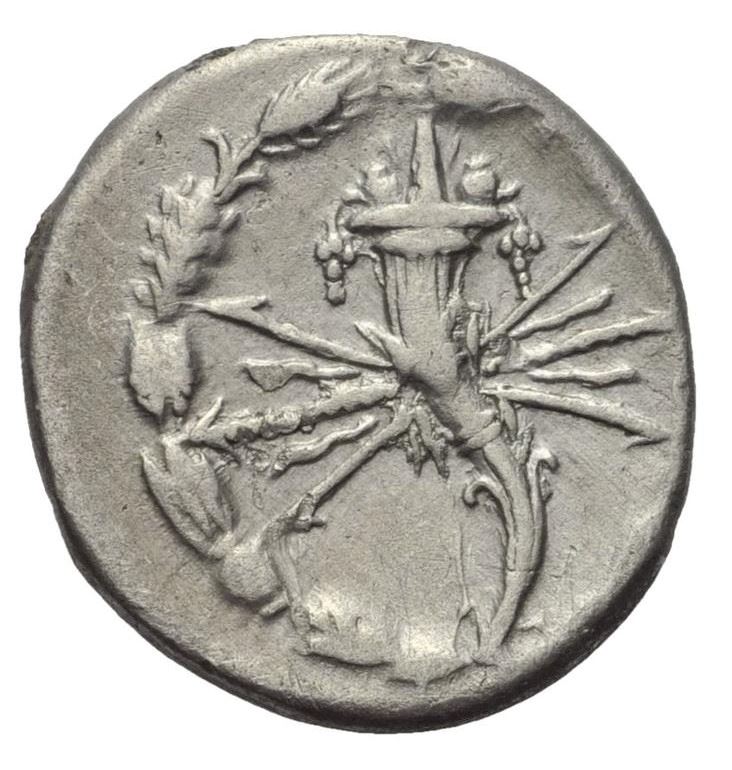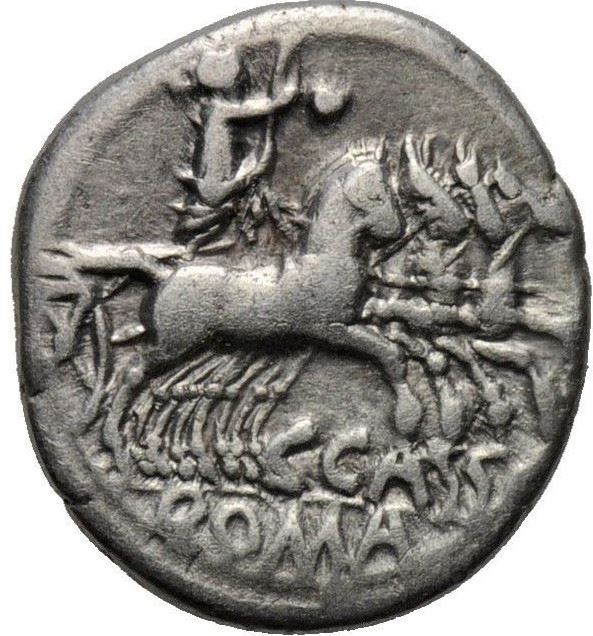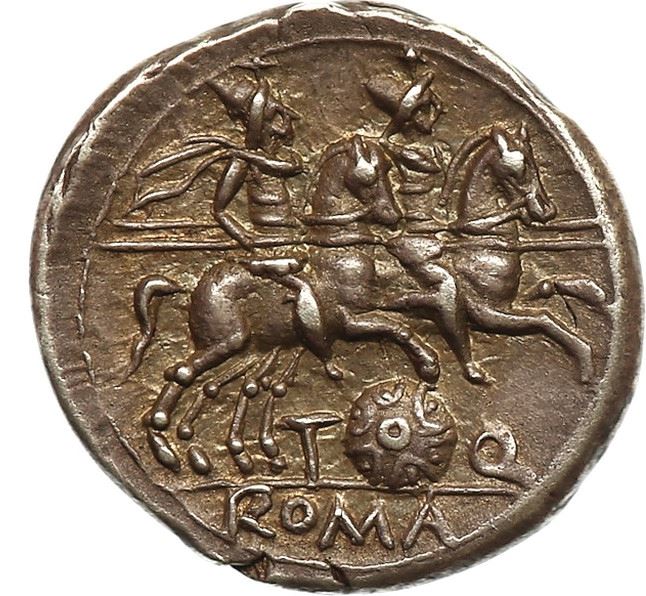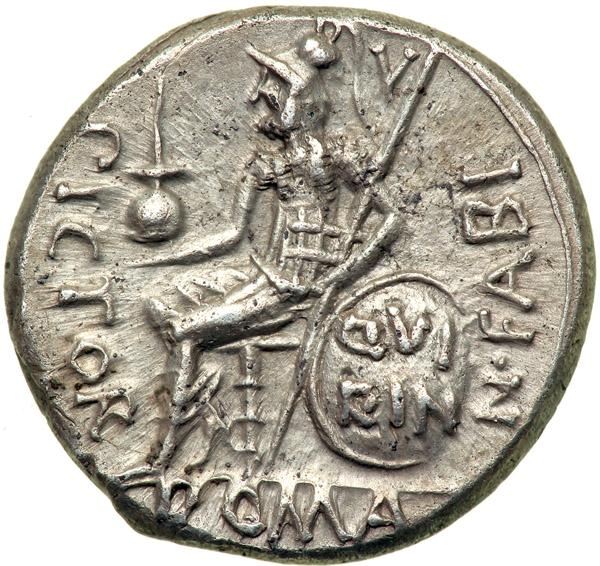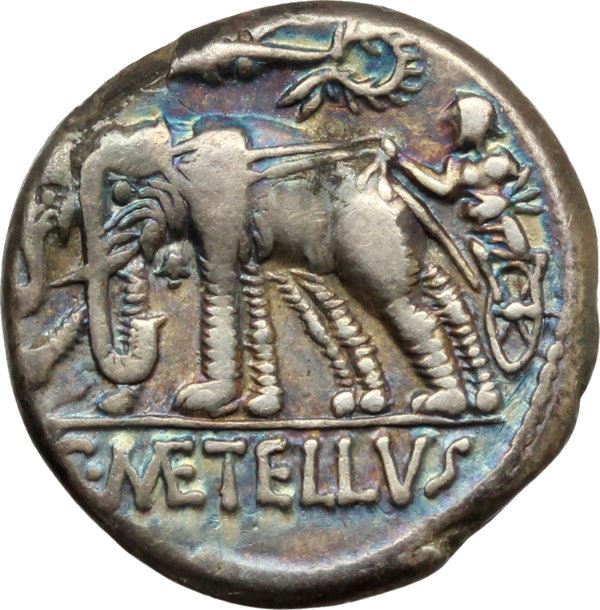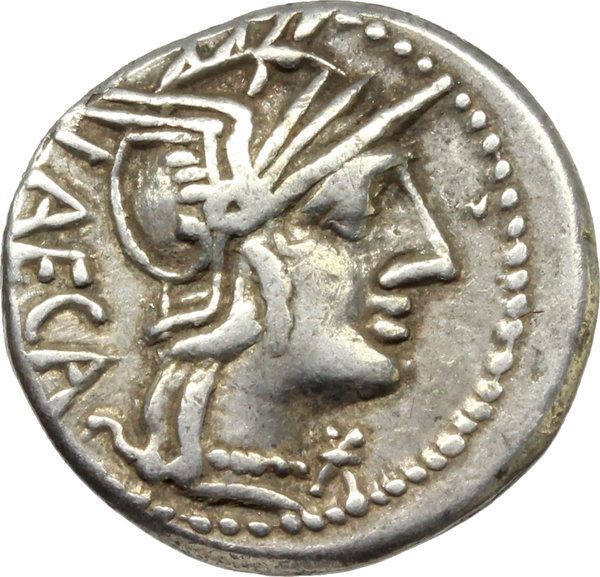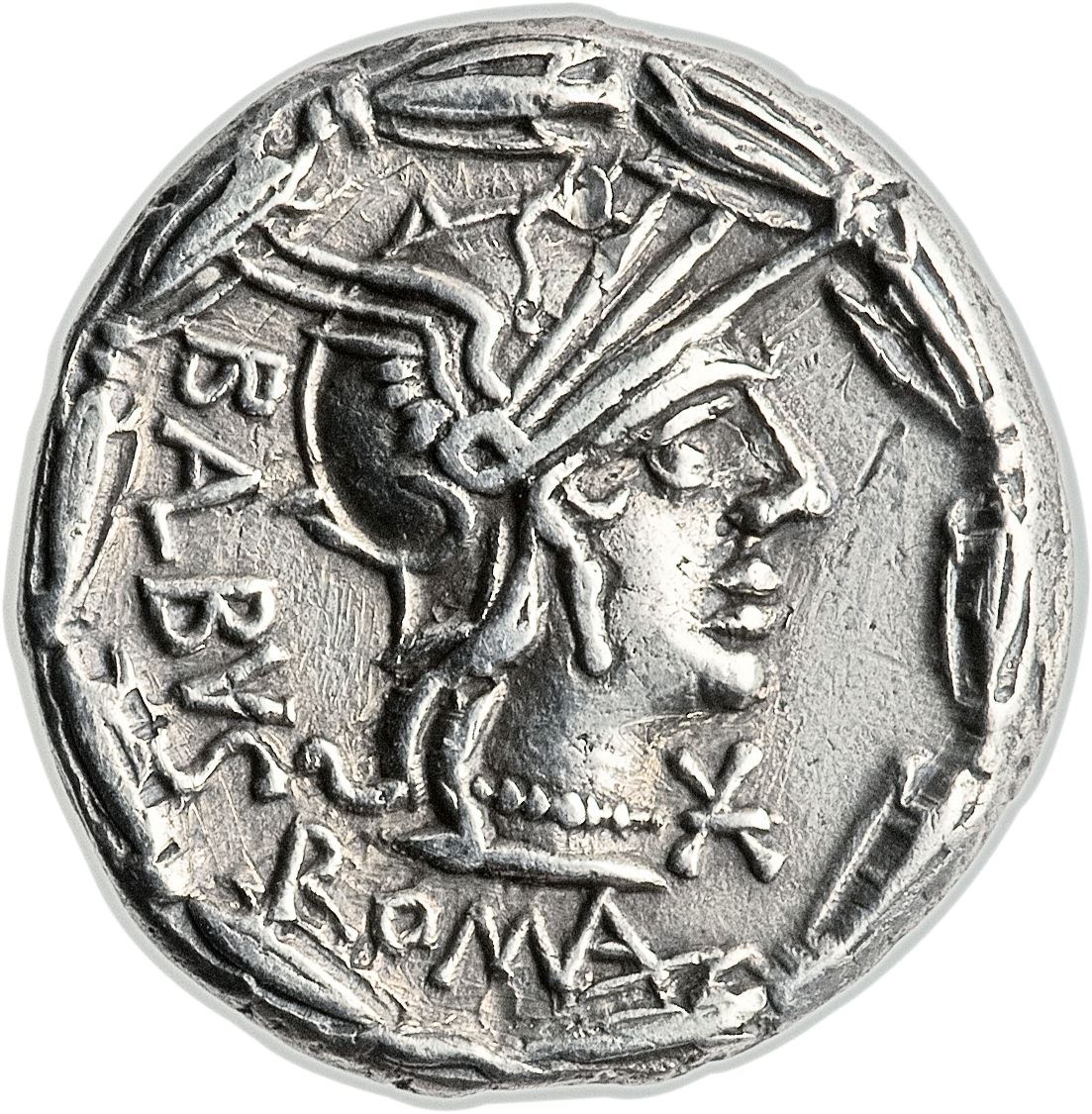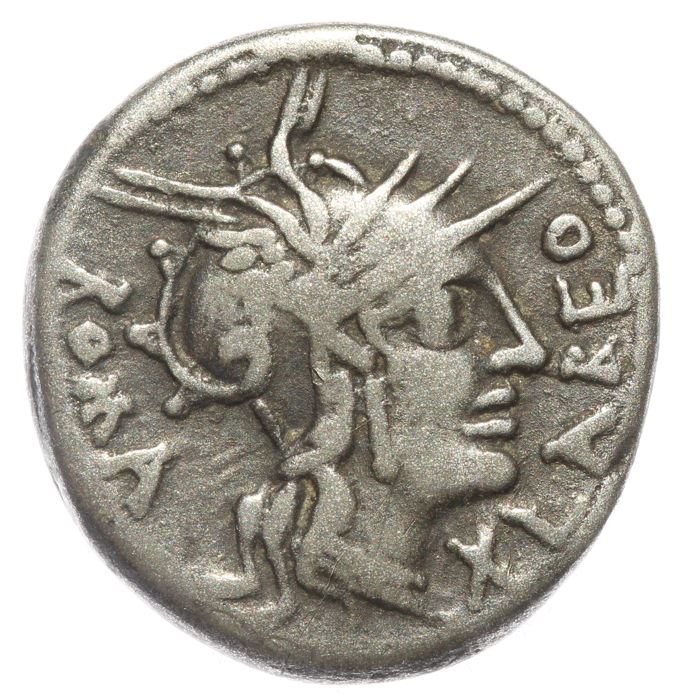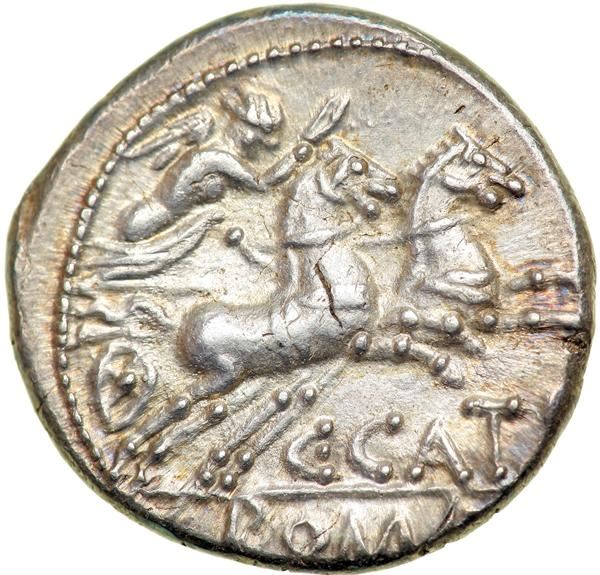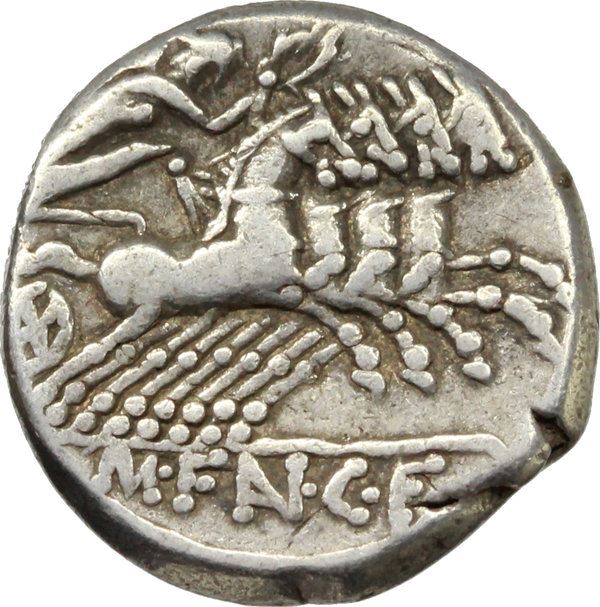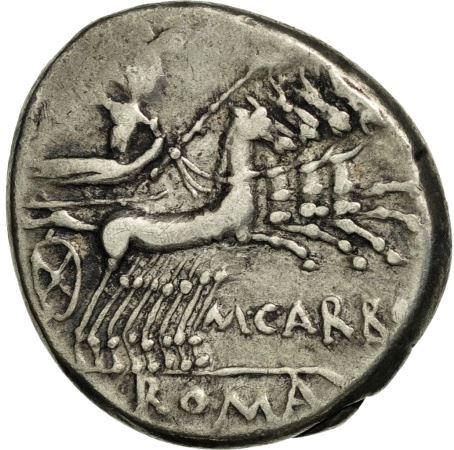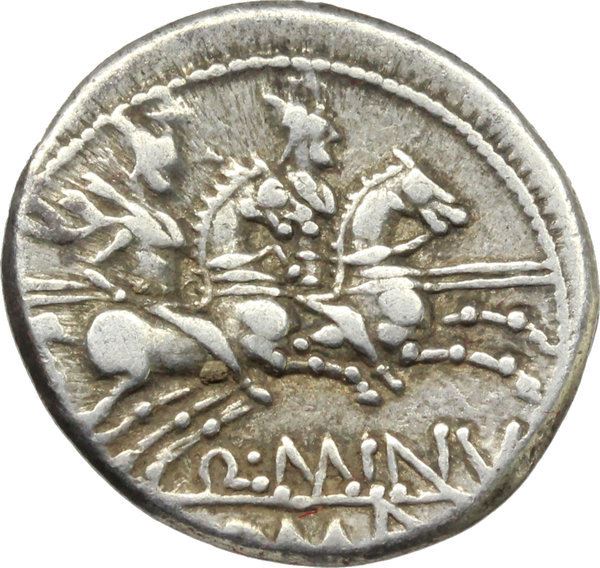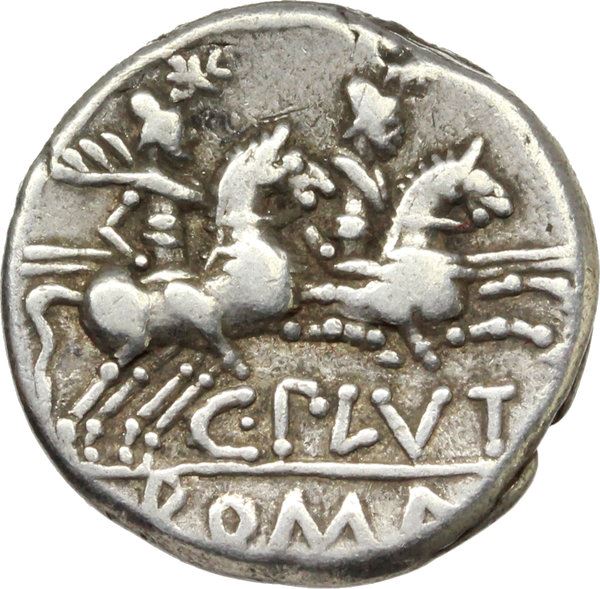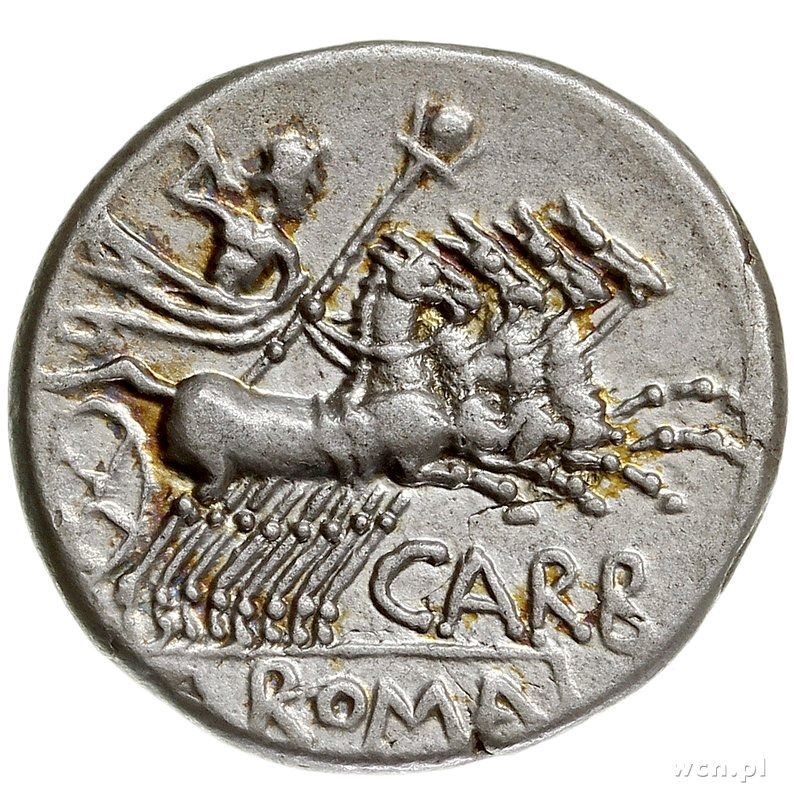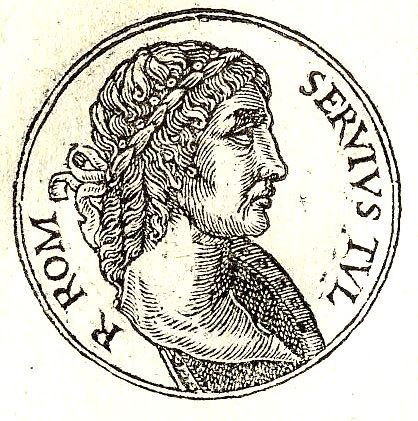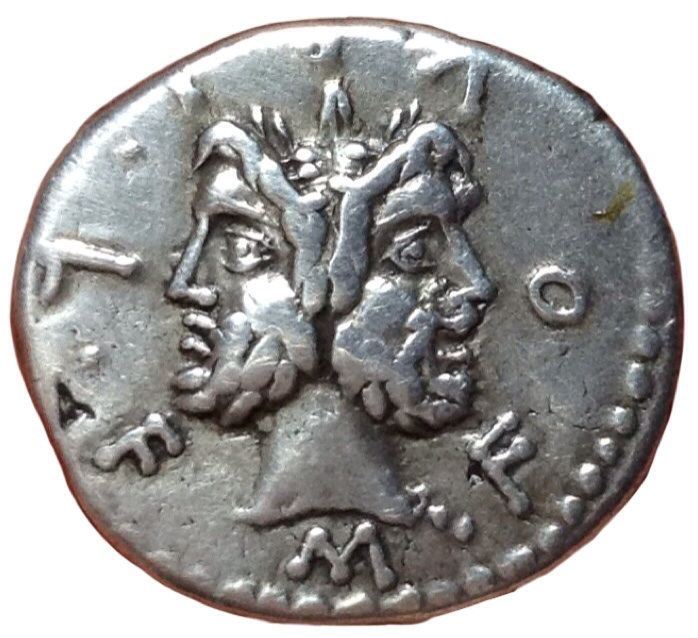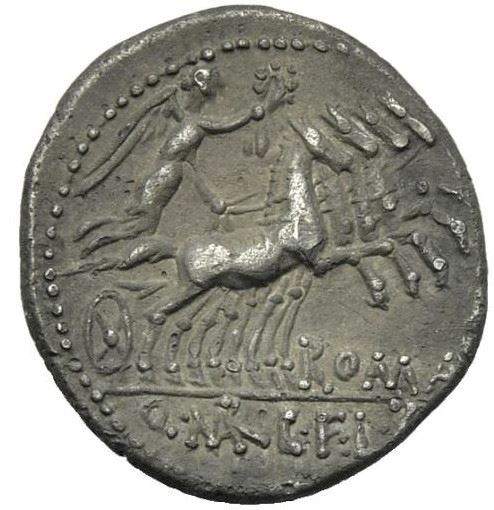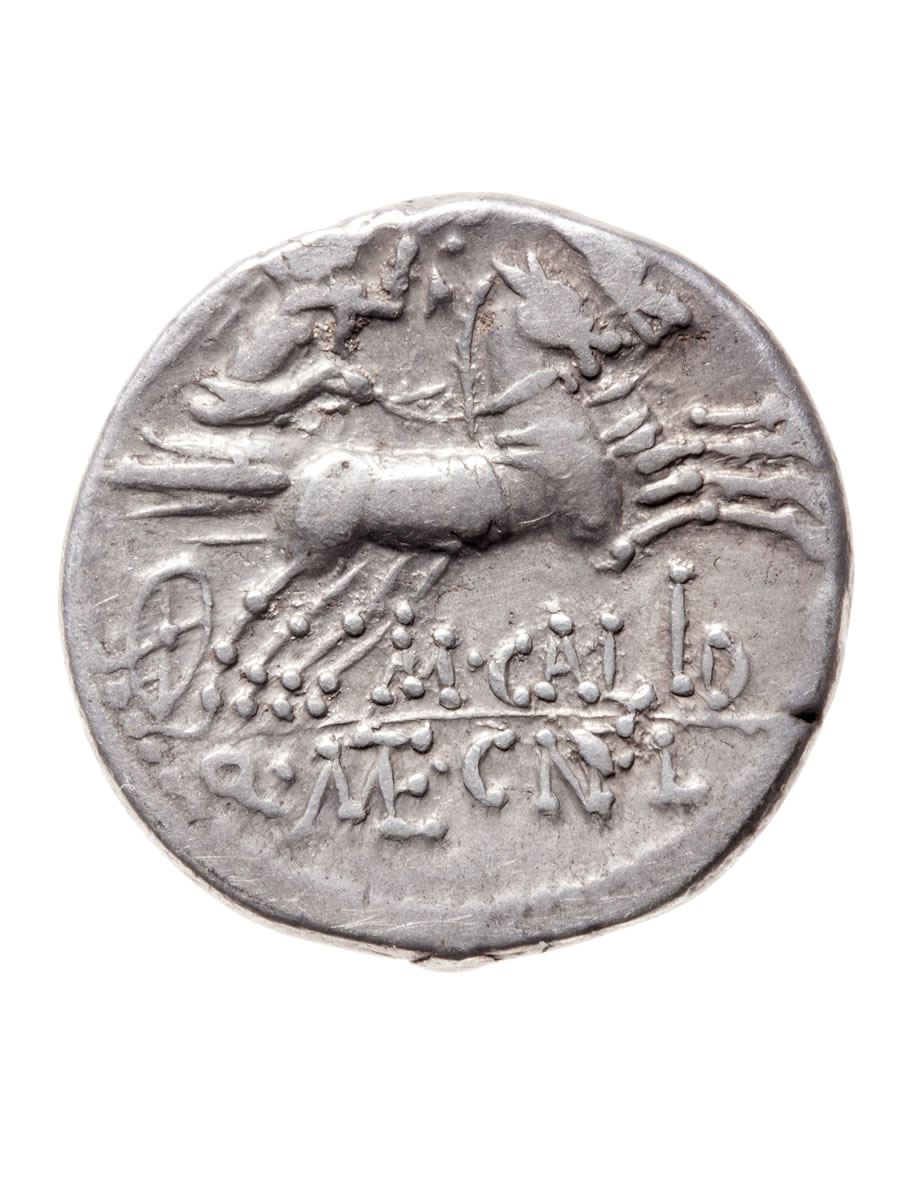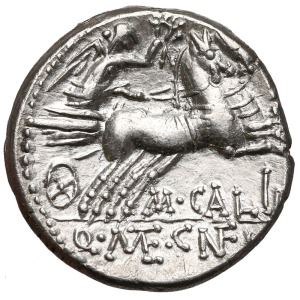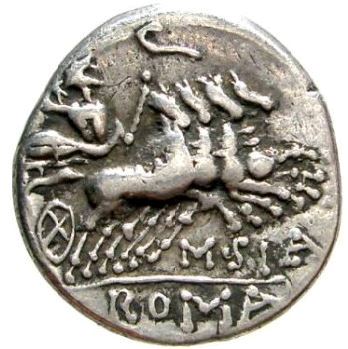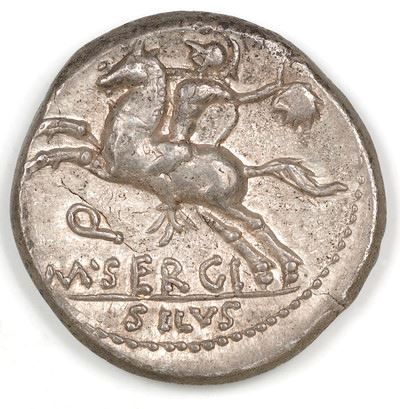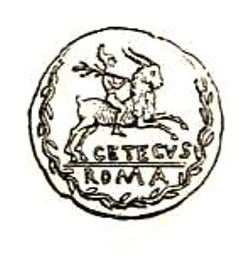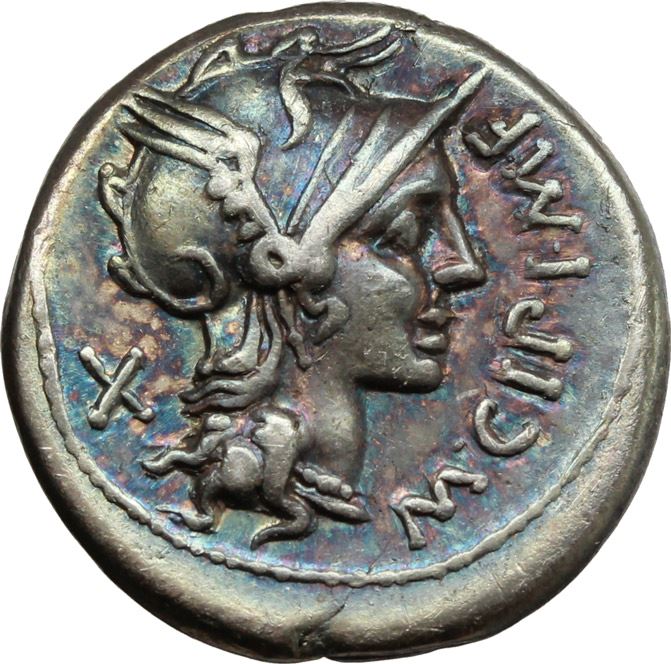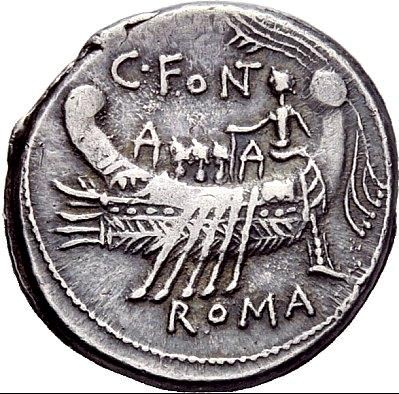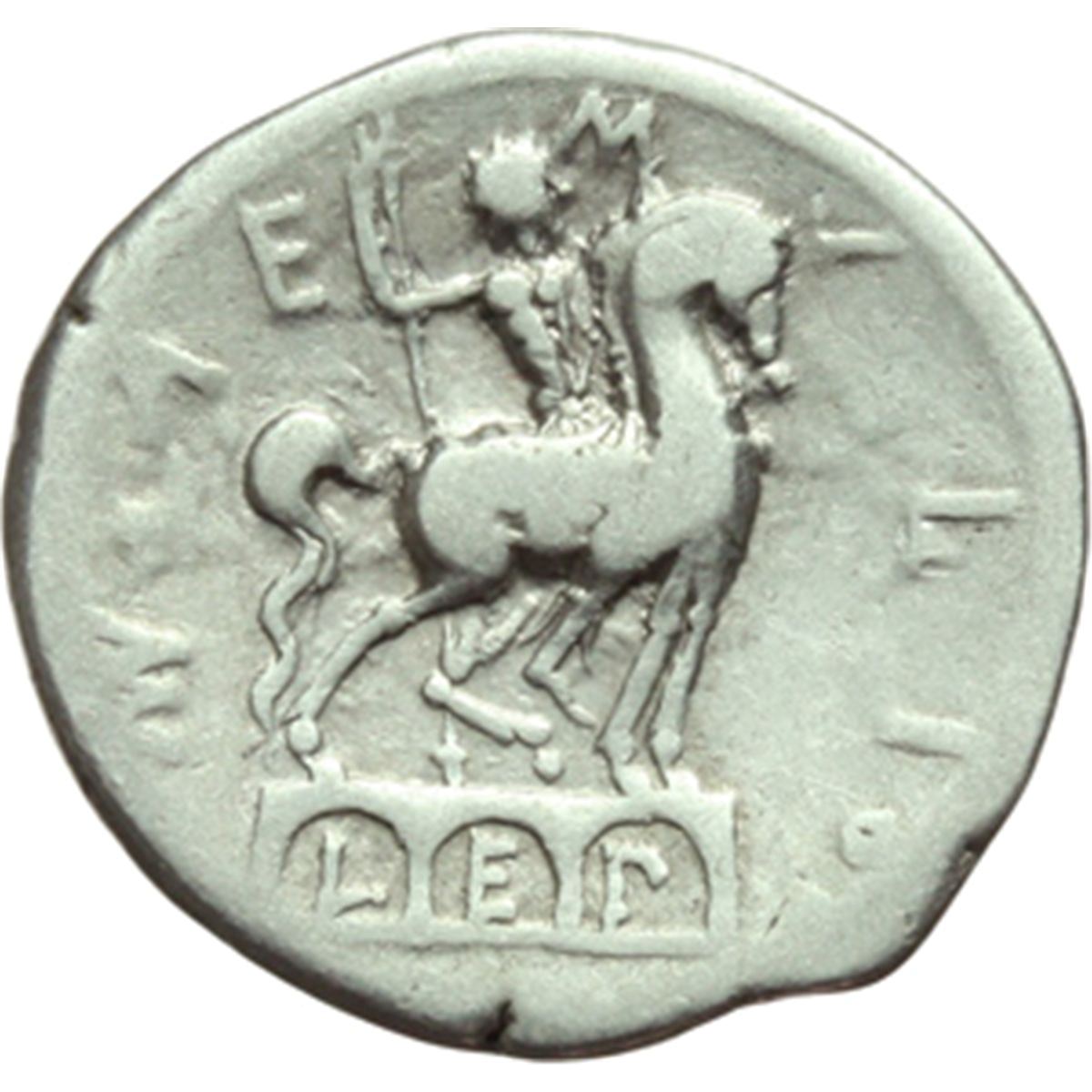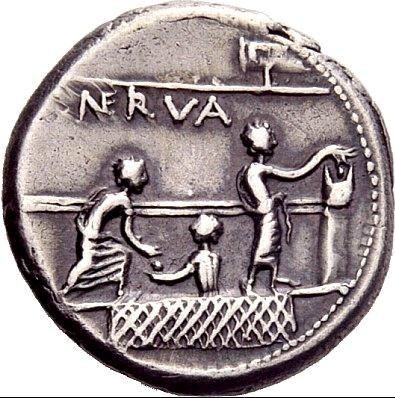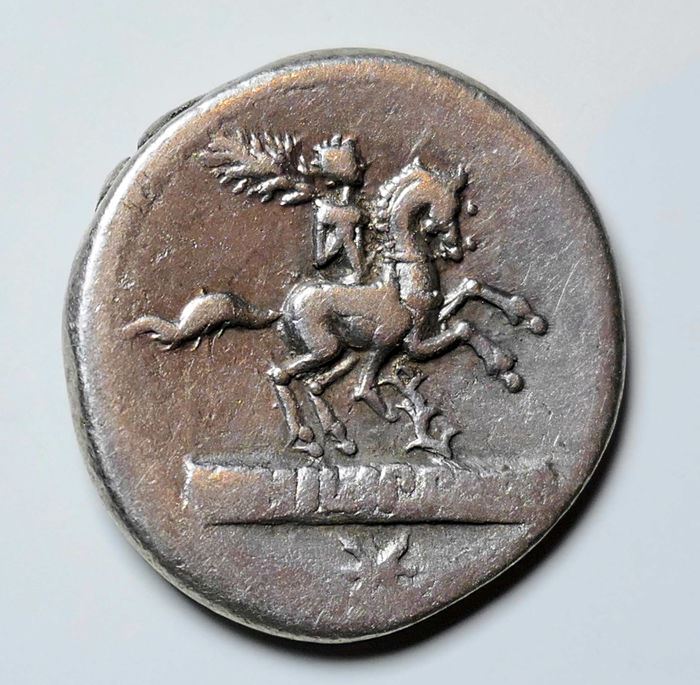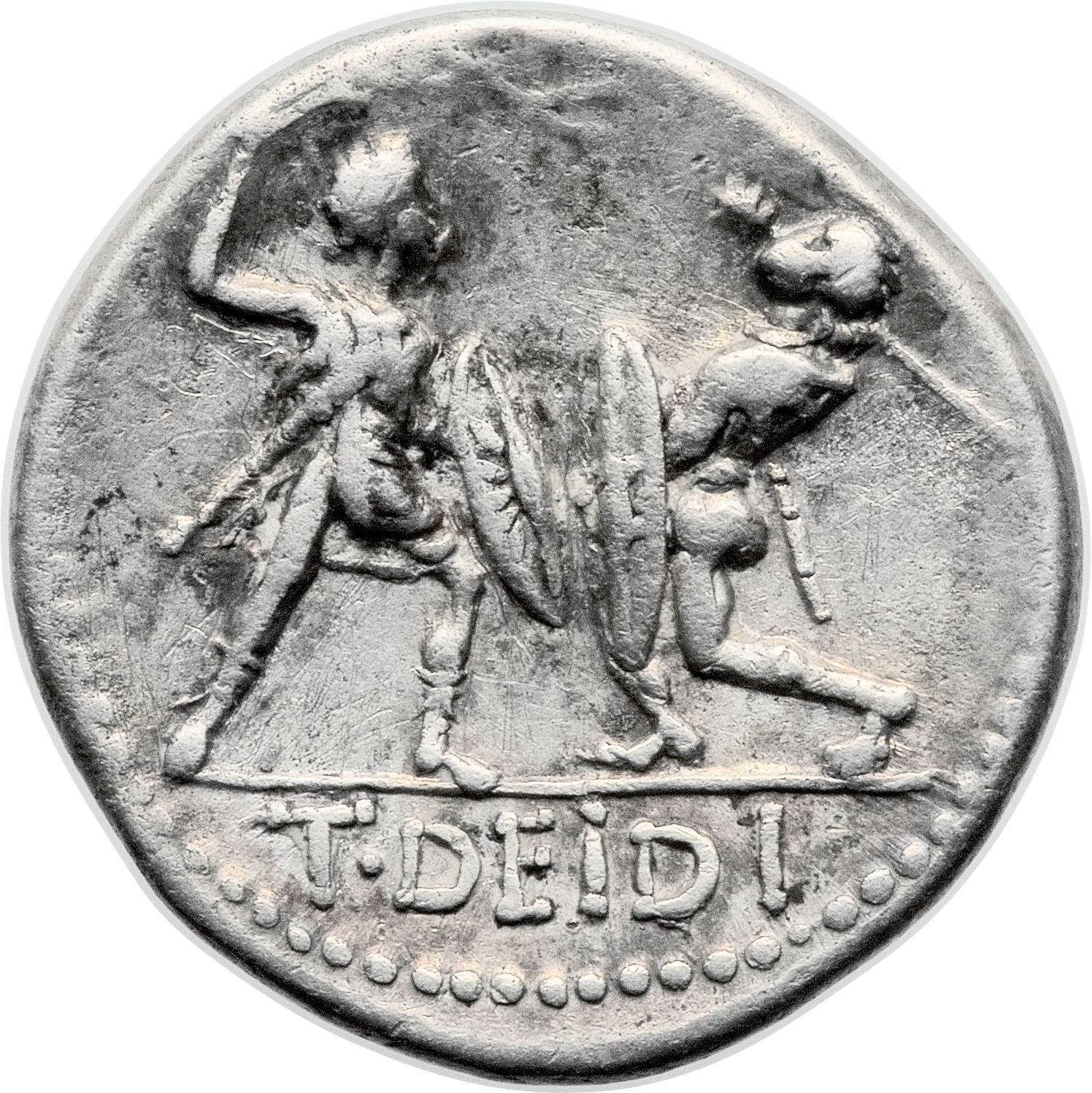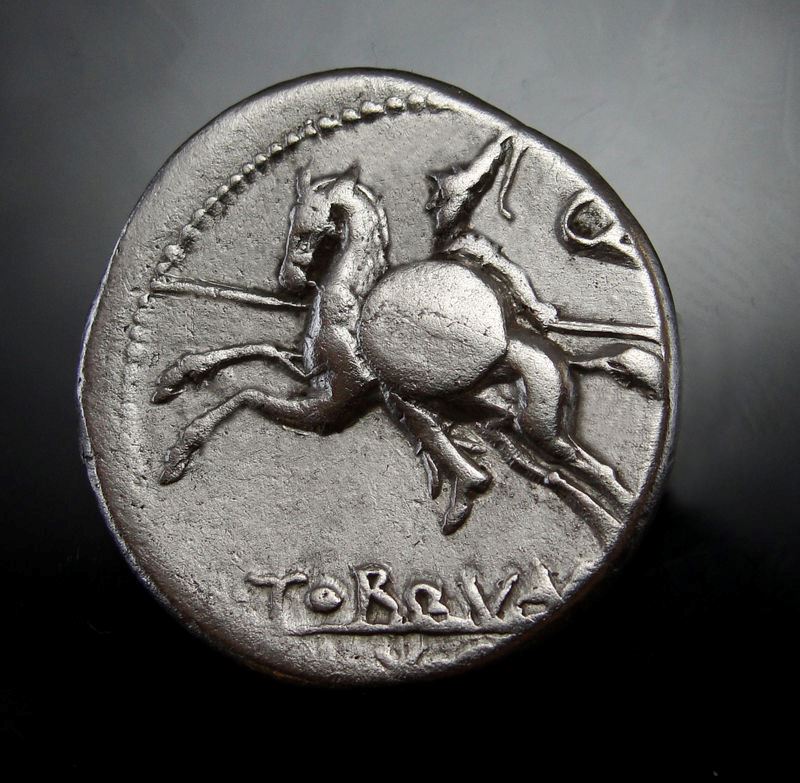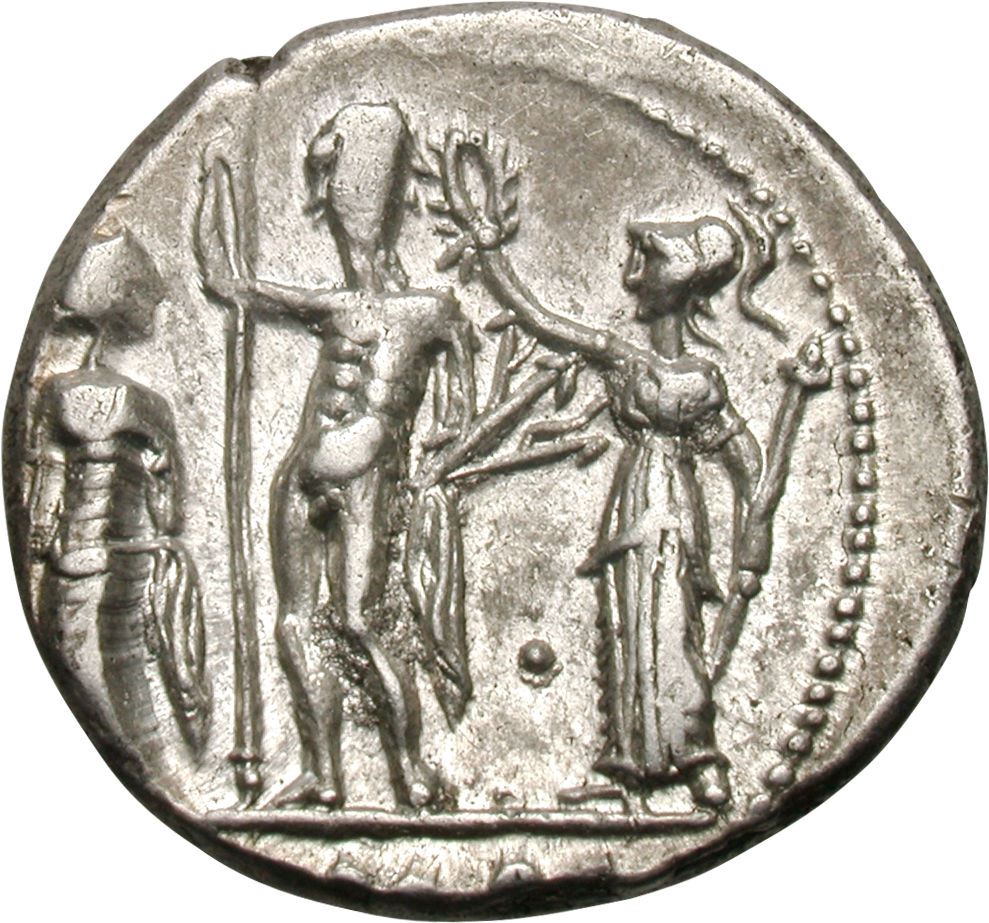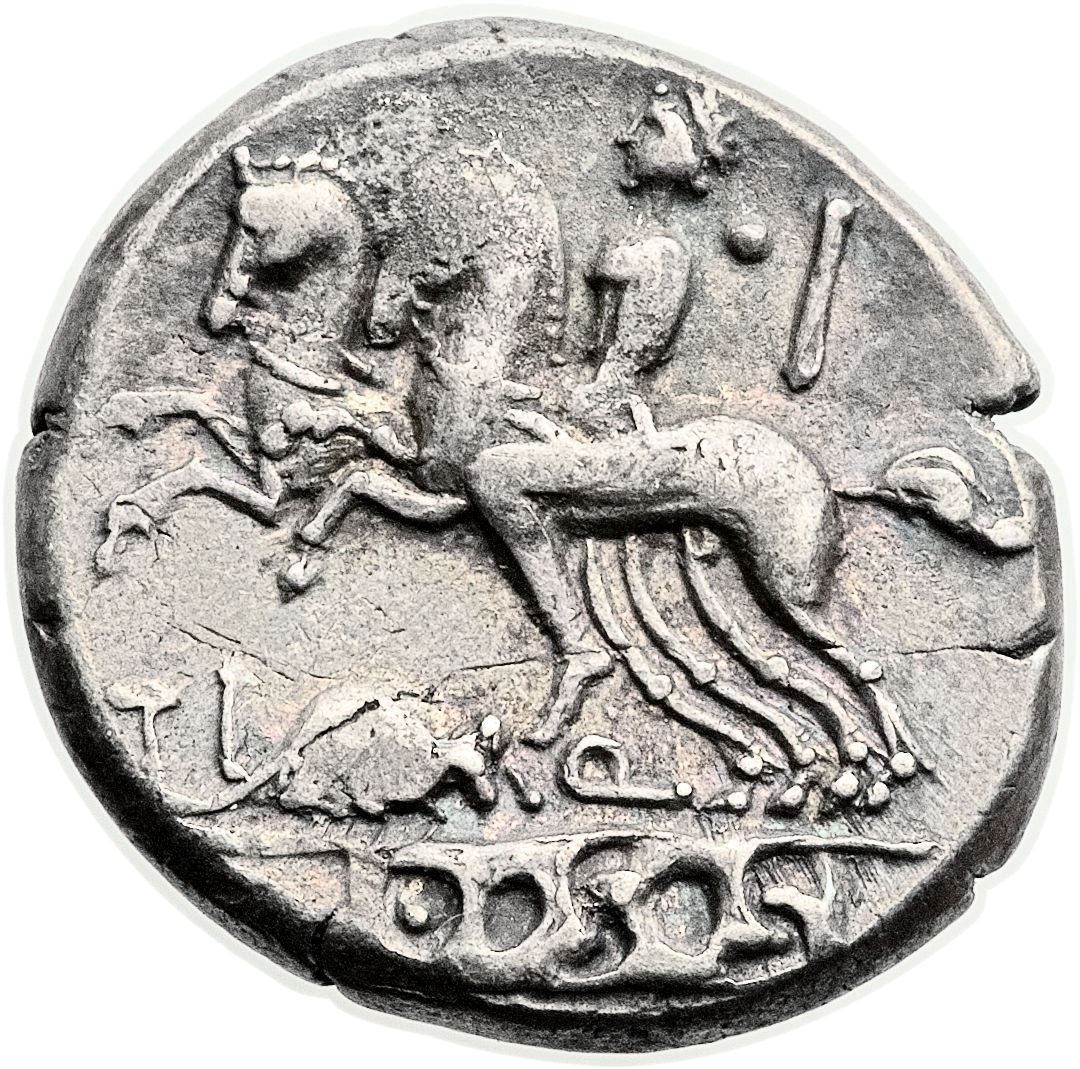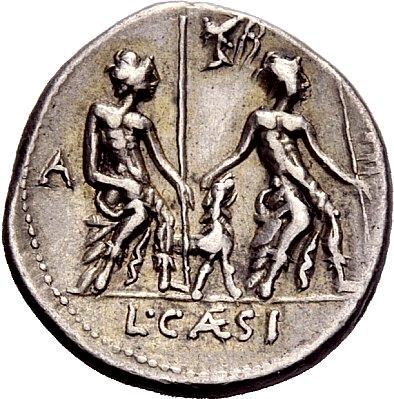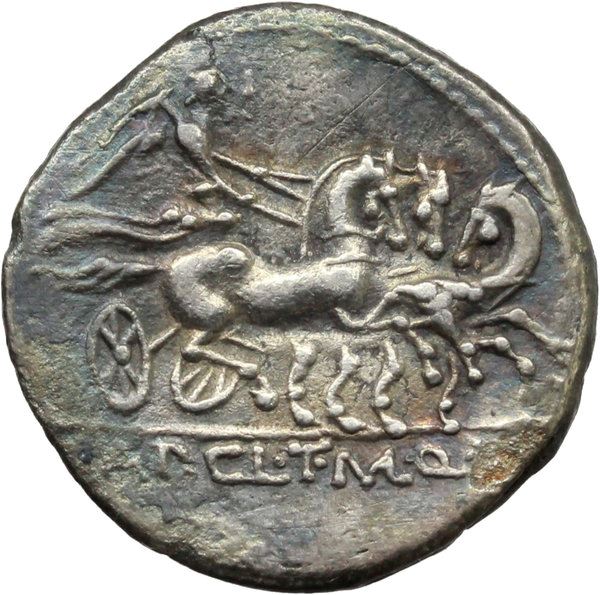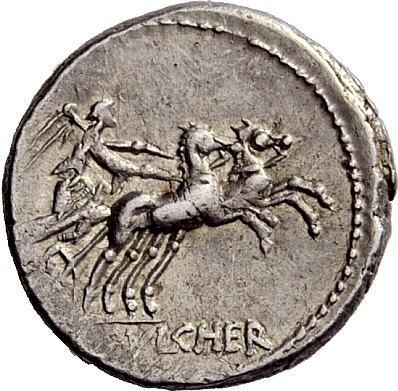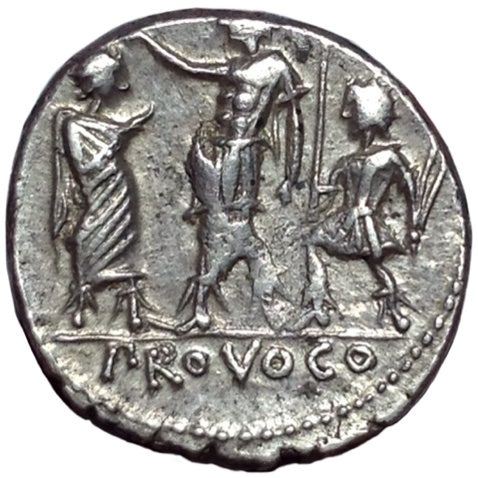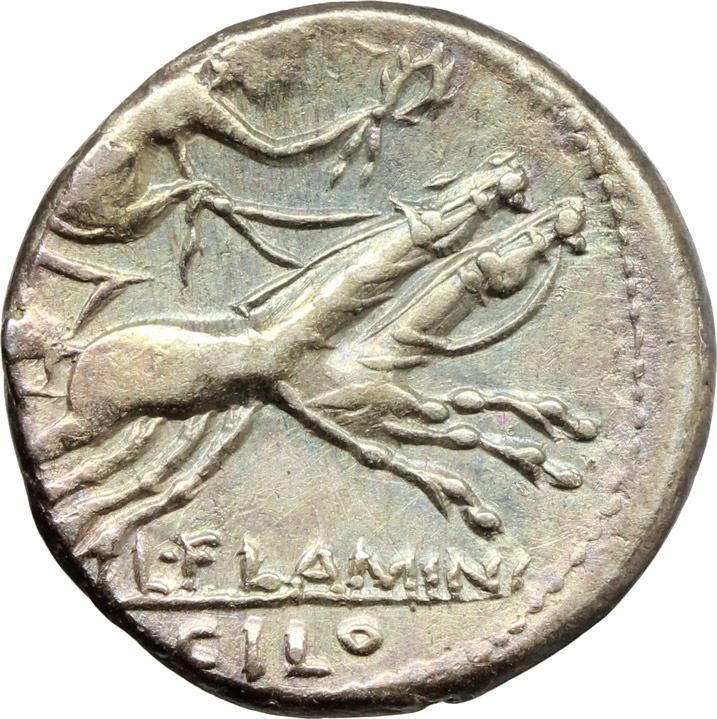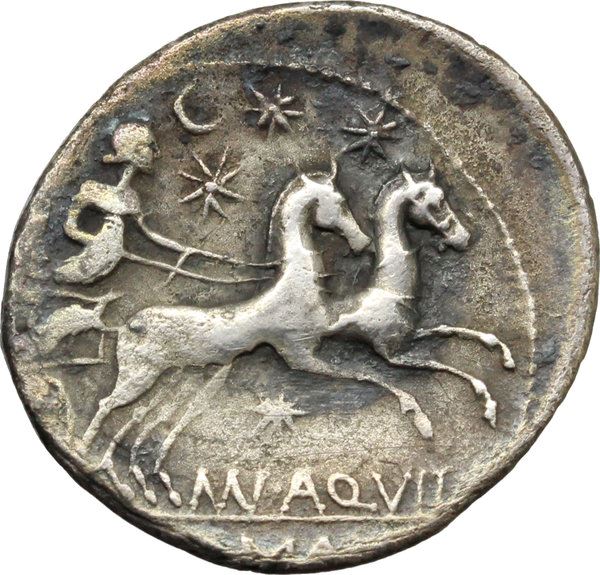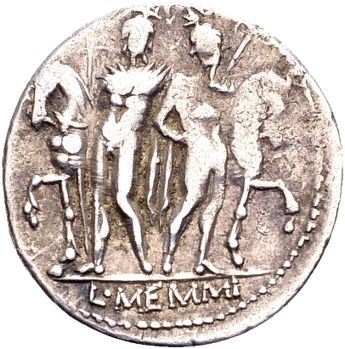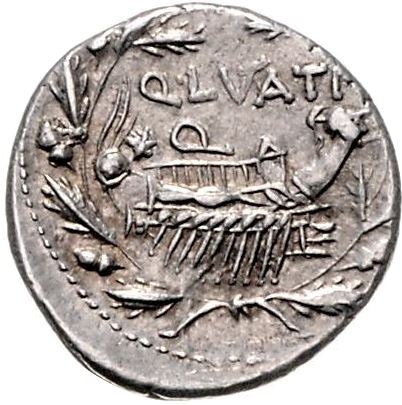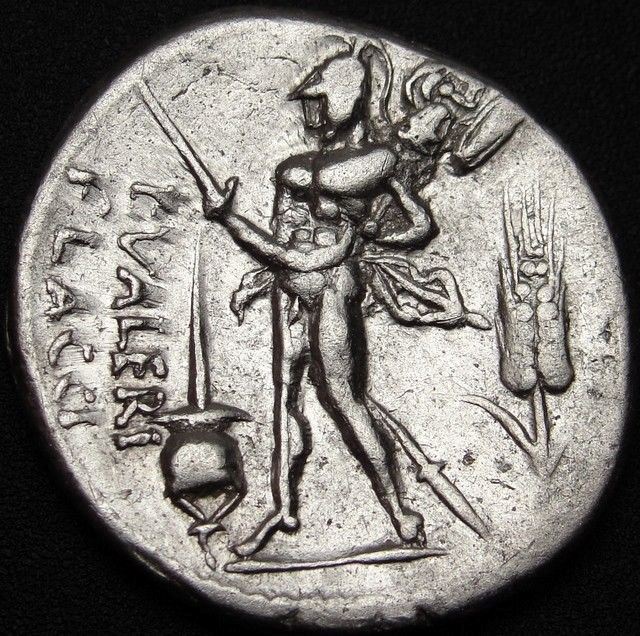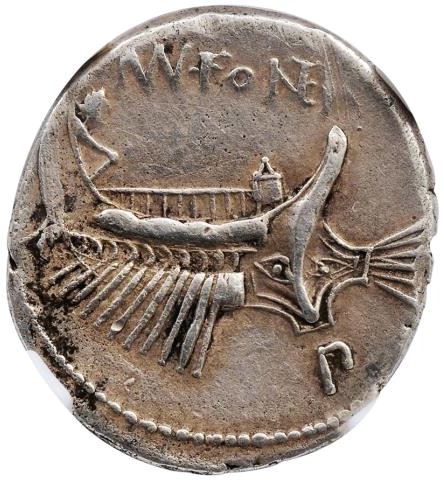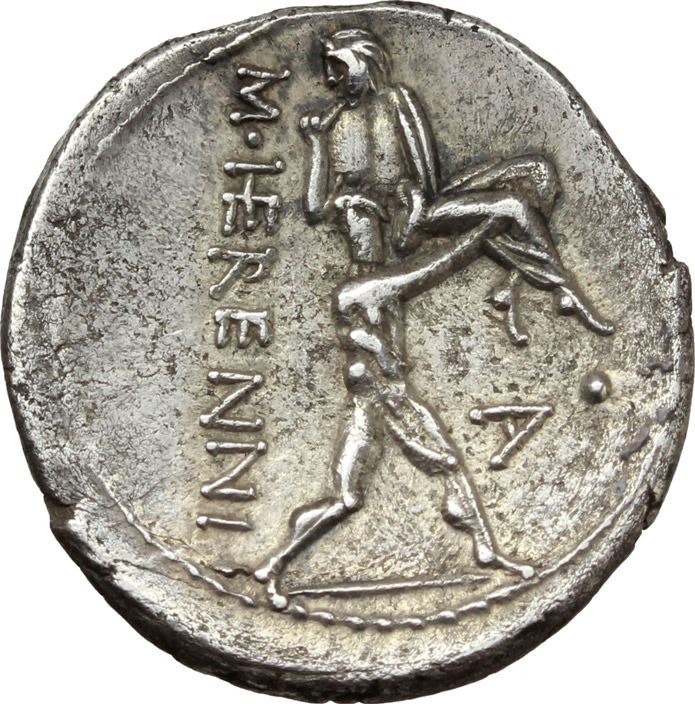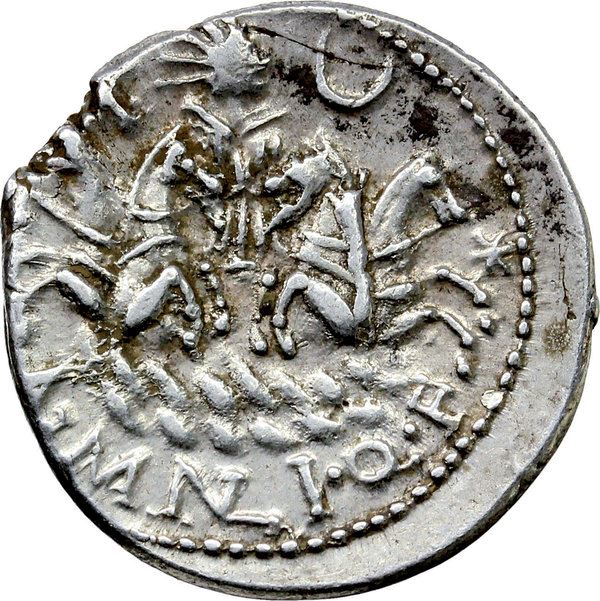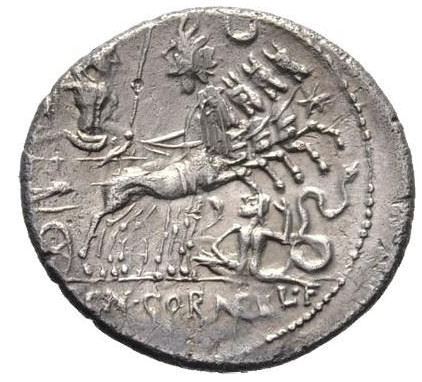The period between the end of the 3rd Punic War and the last Macedonian War, which ended in 148 BC, was one of great social upheaval.
The many conflicts in the previous decades had seen the plebians grow poorer and their farms fall into disrepair. On the other hand, the landed aristocracy was having a field day, buying up bankrupt farms. The result was that masses of unemployed plebeians soon began to flood into Rome, and with them support for the candidate which offered them the most.
The Gracchi brothers were two of the most radical reformers, and while they initially had great success they were both eventually defeated and their reforms repealed. This would later result in the devestating war known as the Social War.
The many conflicts in the previous decades had seen the plebians grow poorer and their farms fall into disrepair. On the other hand, the landed aristocracy was having a field day, buying up bankrupt farms. The result was that masses of unemployed plebeians soon began to flood into Rome, and with them support for the candidate which offered them the most.
The Gracchi brothers were two of the most radical reformers, and while they initially had great success they were both eventually defeated and their reforms repealed. This would later result in the devestating war known as the Social War.
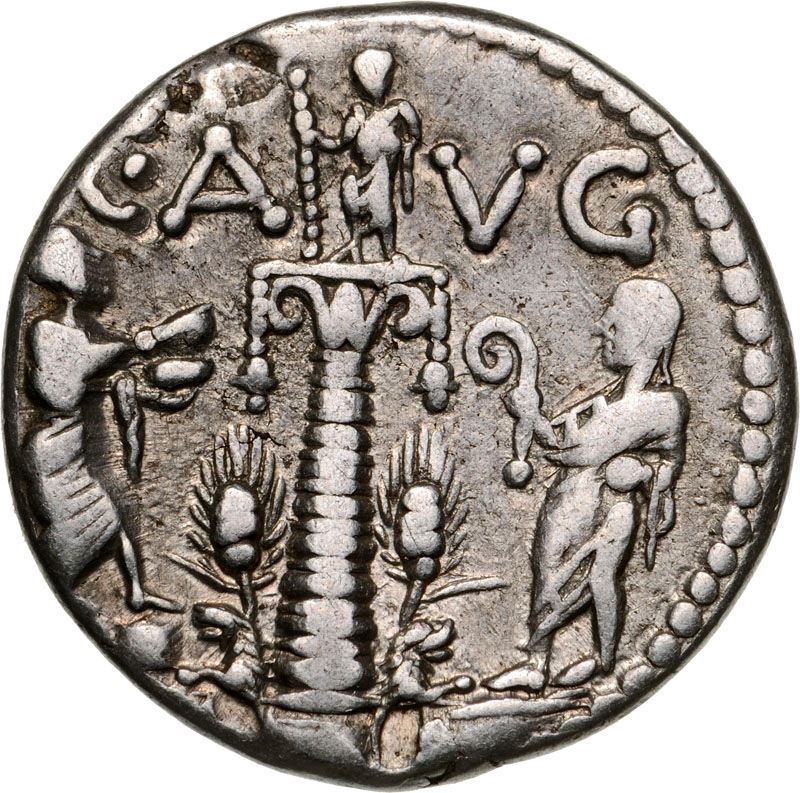
Marcus Junius D. f. D. n. Silanus was a member of the Junii Silani, a noble Roman family, who held the consulship in 109 BC.
He was a moneyer in 145 BC, and is probably identical with the tribune of the people Marcus Junius D. f., who introduced in 124 or 123 BC a law against exploitative Roman governors (lex Iunia)
In 109 BC Silanus was elected consul, as the fist member of ...
He was a moneyer in 145 BC, and is probably identical with the tribune of the people Marcus Junius D. f., who introduced in 124 or 123 BC a law against exploitative Roman governors (lex Iunia)
In 109 BC Silanus was elected consul, as the fist member of ...
T. Annius Rufus was one of the moneyers for the year 144 BC. He later served as Consul in 128 BC.
Gens Annia was a plebeian family of considerable antiquity at Rome. The first person of this name whom Livy mentions is the Latin praetor Lucius Annius of Setia, a Roman colony in 340 BC. By the time of the Second Punic War, the Annii were obtaining minor magistracies at Rome, and in 153 BC...
Gens Annia was a plebeian family of considerable antiquity at Rome. The first person of this name whom Livy mentions is the Latin praetor Lucius Annius of Setia, a Roman colony in 340 BC. By the time of the Second Punic War, the Annii were obtaining minor magistracies at Rome, and in 153 BC...
C. Curiatius Trigeminus was one of the moneyers for the year 142 BC. According to Crawford, he is probably the father of the C. Curiatius Trigeminus who was moneyer in 135 BC. He probably served as Tribunis Plebis in 138 BC, and died while in office.
Gens Curiatia was a distinguished family at Rome, with both patrician and plebeian branches. Members of this gens are mentioned in connec...
Gens Curiatia was a distinguished family at Rome, with both patrician and plebeian branches. Members of this gens are mentioned in connec...
L. Julius was one of the moneyers for the year 141 BC. He is often mistaken for his namesake the moneyer L. Julius, who struck coins on 101 BC.
Gens Julia or Iulia was one of the most ancient patrician families at Ancient Rome. Members of the gens attained the highest dignities of the state in the earliest times of the Republic.
The first of the family to obtain the consulsh...
Gens Julia or Iulia was one of the most ancient patrician families at Ancient Rome. Members of the gens attained the highest dignities of the state in the earliest times of the Republic.
The first of the family to obtain the consulsh...
L. Atilius Nomentanus was one of the moneyers for the year 141 BC. He later served on the staff of Q. Mucius Scaevola, Praetor in Asia in 120 BC.
Gens Atilia, sometimes written Atillia, was a family at Rome, which had both patrician and plebeian branches. The first member of this gens who obtained the consulship was Marcus Atilius Regulus, in 335 BC. The Atilii continued to hold the hig...
Gens Atilia, sometimes written Atillia, was a family at Rome, which had both patrician and plebeian branches. The first member of this gens who obtained the consulship was Marcus Atilius Regulus, in 335 BC. The Atilii continued to hold the hig...
C. Titinius was one of the moneyers for the year 141 BC. He is not otherwise known.
Gens Titinia was a plebian gens . No mention is made of it until the decemviri period, but it never became an important gens, and none of its members reached the consulate.
Gens Titinia was a plebian gens . No mention is made of it until the decemviri period, but it never became an important gens, and none of its members reached the consulate.
M. Aufidius Rusticus was one of the moneyers for the year 140 BC. He is not otherwise known.
Gens Aufidia was a plebeian family at Rome, which is not known until the later times of the Republic. The first member to obtain the consulship was Gnaeus Aufidius Orestes, in 71 BC.
In Republican times, the Aufidii used the praenomina Gnaeus, Titus, Marcus, and Sextus. Lucius and Gai...
Gens Aufidia was a plebeian family at Rome, which is not known until the later times of the Republic. The first member to obtain the consulship was Gnaeus Aufidius Orestes, in 71 BC.
In Republican times, the Aufidii used the praenomina Gnaeus, Titus, Marcus, and Sextus. Lucius and Gai...
C. Valerius C.f. Flaccus was one of the moneyers for the year 140 BC. He is not othwewise known.
Gens Gens Valeria was a patrician family at Rome, prominent from the very beginning of the Republic to the latest period of the Empire. Publius Valerius Poplicola was one of the consuls in 509 BC, the year that saw the overthrow of the Tarquins, and the members of his family were among the m...
Gens Gens Valeria was a patrician family at Rome, prominent from the very beginning of the Republic to the latest period of the Empire. Publius Valerius Poplicola was one of the consuls in 509 BC, the year that saw the overthrow of the Tarquins, and the members of his family were among the m...
M. Aurelius L.f. Cotta was one of the moneyers for the year 139 BC. He is not otherwise known.
Gens Aurelia was a plebeian family at Rome, which flourished from the third century BC to the latest period of the Empire. The first of the Aurelian gens to obtained the consulship was Gaius Aurelius Cotta in 252 BC. From then to the end of the Republic, the Aurelii supplied many distinguished...
Gens Aurelia was a plebeian family at Rome, which flourished from the third century BC to the latest period of the Empire. The first of the Aurelian gens to obtained the consulship was Gaius Aurelius Cotta in 252 BC. From then to the end of the Republic, the Aurelii supplied many distinguished...
A. Spurilius was one of the moneyers for the year 139 BC. He is not otherwise known, and could also be called Spurius or Spurinna.
In fact, the entire Gens Spurilia is only known from coins - and from a single mention of a tribune in some editions of Livy.
In fact, the entire Gens Spurilia is only known from coins - and from a single mention of a tribune in some editions of Livy.
C. Renius was one of the moneyers for the year 138 BC. He is not otherwise known.
In fact, the entire Gens Renia is completely unknown except for these coins. During the Empire, a Rennius family which could be descended from this gens appears, but they are likewise almost unknown.
A single inscription indicates that they may have originated from the city of Lanuvium.
In fact, the entire Gens Renia is completely unknown except for these coins. During the Empire, a Rennius family which could be descended from this gens appears, but they are likewise almost unknown.
A single inscription indicates that they may have originated from the city of Lanuvium.
Gnaeus Gellius was one of the moneyers for the year 138 BC.
He was the author of a history of Rome from the earliest epoch, extending at least to the year 145 BC, as indicated by Censorinus.
He described the Rape of the Sabines in his second book; the reign of Titus Tatius in the third; and in the 33rd, dealing with the Second Punic War, the death of Postumius Albinus and the...
He was the author of a history of Rome from the earliest epoch, extending at least to the year 145 BC, as indicated by Censorinus.
He described the Rape of the Sabines in his second book; the reign of Titus Tatius in the third; and in the 33rd, dealing with the Second Punic War, the death of Postumius Albinus and the...
Ti. Veturius Gracchi was one of the moneyers for the year 137 BC. He is not otherwise known.
Gens Veturia, originally Vetusia, was an ancient patrician family of the Roman Republic. According to tradition, the armourer Mamurius Veturius lived in the time of Numa Pompilius, and made the sacred ancilia. The Veturii occur regularly in the consular fasti of the early Republic, with Gaius Ve...
Gens Veturia, originally Vetusia, was an ancient patrician family of the Roman Republic. According to tradition, the armourer Mamurius Veturius lived in the time of Numa Pompilius, and made the sacred ancilia. The Veturii occur regularly in the consular fasti of the early Republic, with Gaius Ve...
Sex. Pompeius was one of the moneyers for the year 137 BC. He is probably identical to Sextus Pompeius, Praetor in 119 BC and the father of Cn. Pompeius Strabo, which is to say that he was the grandfather of Pompey the Great.
Gens Pompeia was a plebeian family at ancient Rome, first appearing in history during the second century BC, and frequently occupying the highest offices of the Ro...
Gens Pompeia was a plebeian family at ancient Rome, first appearing in history during the second century BC, and frequently occupying the highest offices of the Ro...
M. Baebius Q.f. Tampilus was one of the moneyers for the year 137 BC. He is not otherwise known.
Gens Baebia was a plebeian family in ancient Rome. The first member of the gens who obtained the consulship was Gnaeus Baebius Tamphilus, in 182 BC.
During the later Republic, the Baebii were frequently connected with the patrician family of the Aemilii.
The cognomina ...
Gens Baebia was a plebeian family in ancient Rome. The first member of the gens who obtained the consulship was Gnaeus Baebius Tamphilus, in 182 BC.
During the later Republic, the Baebii were frequently connected with the patrician family of the Aemilii.
The cognomina ...
Cnaeus Lucretius Trio was one of the moneyers for the year 136 BC. He may be an ancestor of Lucius Lucretius Trio.
Gens Lucretia was a prominent family of the Roman Republic. Originally patrician, the gens later included a number of plebeian families. The Lucretii were one of the most ancient gentes, and the wife of Numa Pompilius, the second King of Rome, was named Lucretia. The first ...
Gens Lucretia was a prominent family of the Roman Republic. Originally patrician, the gens later included a number of plebeian families. The Lucretii were one of the most ancient gentes, and the wife of Numa Pompilius, the second King of Rome, was named Lucretia. The first ...
L. Antestius Gragulus was one of the moneyers for the year 136 BC. He is otherwise unknown.
Gens Antestia, or Antistia, was a plebeian family at Rome. The first of the gens to achieve prominence was Sextus Antistius, tribune of the plebs in 422 BC.
The oldest families of the Antistii used the praenomina Sextus, Lucius, and Marcus. In the later Republic, members of the gens a...
Gens Antestia, or Antistia, was a plebeian family at Rome. The first of the gens to achieve prominence was Sextus Antistius, tribune of the plebs in 422 BC.
The oldest families of the Antistii used the praenomina Sextus, Lucius, and Marcus. In the later Republic, members of the gens a...
C. Serveilius M.f. C.n. was one of the moneyers for the year 136 BC. He is not otherwise known.
Gens Servilia was a patrician family at Rome. The gens was celebrated during the early ages of the Republic, and the names of few gentes appear more frequently at this period in the consular Fasti. It continued to produce men of influence in the state down to the latest times of the Republic,...
Gens Servilia was a patrician family at Rome. The gens was celebrated during the early ages of the Republic, and the names of few gentes appear more frequently at this period in the consular Fasti. It continued to produce men of influence in the state down to the latest times of the Republic,...
C. Curiatius Trigeminus filius was one of the moneyers for the year 135 BC. He is probably the son of C. Curiatius Trigeminus, moneyer for 142 BC.
Gens Curiatia was a distinguished family at Rome, with both patrician and plebeian branches. Members of this gens are mentioned in connection with the reign of Tullus Hostilius, the third King of Rome, during the seventh century BC. The first...
Gens Curiatia was a distinguished family at Rome, with both patrician and plebeian branches. Members of this gens are mentioned in connection with the reign of Tullus Hostilius, the third King of Rome, during the seventh century BC. The first...
L. Trebanius was one of the moneyers for the year 135 BC. He is not otherwise known.
Gens Trebania is completely unknown, except for coins by this moneyer.
Gens Trebania is completely unknown, except for coins by this moneyer.
C. Minucius C.f. Augurinus was one of the moneyers for the year 135 BC. He is not otherwise known.
Gens Minucia was a Roman family, which flourished from the earliest days of the Republic until imperial times. The gens was apparently of patrician origin, but was better known by its plebeian branches. The first of the Minucii to hold the consulship was Marcus Minucius Augurinus, elected ...
Gens Minucia was a Roman family, which flourished from the earliest days of the Republic until imperial times. The gens was apparently of patrician origin, but was better known by its plebeian branches. The first of the Minucii to hold the consulship was Marcus Minucius Augurinus, elected ...
Ti. Minucius C.f. Augurinus was one of the moneyers for the year 134 BC. He is not otherwise known.
Gens Minucia was a Roman family, which flourished from the earliest days of the Republic until imperial times. The gens was apparently of patrician origin, but was better known by its plebeian branches. The first of the Minucii to hold the consulship was Marcus Minucius Augurinus, elected...
Gens Minucia was a Roman family, which flourished from the earliest days of the Republic until imperial times. The gens was apparently of patrician origin, but was better known by its plebeian branches. The first of the Minucii to hold the consulship was Marcus Minucius Augurinus, elected...
Caius Aburius Geminus was one of the moneyers for the year 134 BC. He is not otherwise known.
The gens Aburia was a plebeian family at Rome during the latter centuries of the Republic, and the 1st century of the Empire. The first member of this gens to achieve prominence was Marcus Aburius, praetor peregrinus in 176 BC.
The Aburii are known to have used the praenomina Marcus,...
The gens Aburia was a plebeian family at Rome during the latter centuries of the Republic, and the 1st century of the Empire. The first member of this gens to achieve prominence was Marcus Aburius, praetor peregrinus in 176 BC.
The Aburii are known to have used the praenomina Marcus,...
M. Marcius Mn.f. was one of the moneyers for the year 134 BC. He is not otherwise known.
Gens Marcia, occasionally written Martia, was one of the oldest and noblest houses at ancient Rome. They claimed descent from the second and fourth Roman Kings, and the first of the Marcii appearing in the history of the Republic would seem to have been patrician; but all of the families of the Marc...
Gens Marcia, occasionally written Martia, was one of the oldest and noblest houses at ancient Rome. They claimed descent from the second and fourth Roman Kings, and the first of the Marcii appearing in the history of the Republic would seem to have been patrician; but all of the families of the Marc...
C. Numitorius C.f. Lem was one of the moneyers for the year 133 BC. He is also known from a senate inquiry.
Gens Numitoria was an ancient but minor plebeian family at Rome. The first member of this gens to appear in history was Lucius Numitorius, elected tribune of the plebs in 472 BC. Although Numitorii are found down to the final century of the Republic, none of them ever held any of...
Gens Numitoria was an ancient but minor plebeian family at Rome. The first member of this gens to appear in history was Lucius Numitorius, elected tribune of the plebs in 472 BC. Although Numitorii are found down to the final century of the Republic, none of them ever held any of...
P. Calpurnius was one of the moneyers for the year 133 BC. According to Crawford, he is perhaps the father of P. Calpurnius Lanarius, Legatus in 81 BC.
Gens Calpurnia was a plebeian family at Rome, which first appears in history during the third century BC. The first of the gens to obtain the consulship was Gaius Calpurnius Piso in 180 BC, but from this time their consulships were very ...
Gens Calpurnia was a plebeian family at Rome, which first appears in history during the third century BC. The first of the gens to obtain the consulship was Gaius Calpurnius Piso in 180 BC, but from this time their consulships were very ...
Lucius Minucius was one of the moneyers for the year 133 BC. He is not otherwise known.
Gens Minucia was a Roman family, which flourished from the earliest days of the Republic until imperial times. The gens was apparently of patrician origin, but was better known by its plebeian branches.
The first of the Minucii to hold the consulship was Marcus Minucius Augurinus, elected...
Gens Minucia was a Roman family, which flourished from the earliest days of the Republic until imperial times. The gens was apparently of patrician origin, but was better known by its plebeian branches.
The first of the Minucii to hold the consulship was Marcus Minucius Augurinus, elected...
P. Maenius M.f. Antias was one of the moneyers for the year 132 BC. He is not otherwise known.
Gens Maenia, occasionally written Mainia, was a plebeian family at ancient Rome. Members of this gens are first mentioned soon after the establishment of the Republic, and occur in history down to the second century BC. Several of them held the position of tribune of the plebs, from which they...
Gens Maenia, occasionally written Mainia, was a plebeian family at ancient Rome. Members of this gens are first mentioned soon after the establishment of the Republic, and occur in history down to the second century BC. Several of them held the position of tribune of the plebs, from which they...
Marcus Aburius M.f. Geminus was one of the moneyers for the year 132 BC.
The gens Aburia was a plebeian family at Rome during the latter centuries of the Republic, and the 1st century of the Empire. The first member of this gens to achieve prominence was Marcus Aburius, praetor peregrinus in 176 BC.
The gens Aburia was a plebeian family at Rome during the latter centuries of the Republic, and the 1st century of the Empire. The first member of this gens to achieve prominence was Marcus Aburius, praetor peregrinus in 176 BC.
M. Fabrinius was one of the moneyers for the year 132 BC. He is not otherwise known.
Gens Fabrinia is only known from this moneyer, who only struck bronze issues.
Gens Fabrinia is only known from this moneyer, who only struck bronze issues.
L. Postumius L.f. Albinus was one of the moneyers for the year 131 BC. He is not otherwise known.
Gens Postumia was one of the most ancient patrician gentes at Rome. Its members frequently held the highest office of the state, from the banishment of the kings to the downfall of the Republic. The first of the Postumii who obtained the consulship was Publius Postumius Tubertus in 505 BC, ...
Gens Postumia was one of the most ancient patrician gentes at Rome. Its members frequently held the highest office of the state, from the banishment of the kings to the downfall of the Republic. The first of the Postumii who obtained the consulship was Publius Postumius Tubertus in 505 BC, ...
L. Opeimius Q.f. was one of the moneyers for the year 131 BC. He later served as Consul in 121 BC.
The gens Opimia, also written Opeimia, was a plebeian family at Rome. Members of this gens are first mentioned during the time of the Samnite Wars, and they are mentioned in Roman historians from then down to the end of the Republic. The first of the Opimii to obtain the consulship was Qui...
The gens Opimia, also written Opeimia, was a plebeian family at Rome. Members of this gens are first mentioned during the time of the Samnite Wars, and they are mentioned in Roman historians from then down to the end of the Republic. The first of the Opimii to obtain the consulship was Qui...
M. Opeimius Q.f. was one of the moneyers for the year 131 BC. He is otherwise unknown.
The gens Opimia, also written Opeimia, was a plebeian family at Rome. Members of this gens are first mentioned during the time of the Samnite Wars, and they are mentioned in Roman historians from then down to the end of the Republic. The first of the Opimii to obtain the consulship was Quintus Opimius...
The gens Opimia, also written Opeimia, was a plebeian family at Rome. Members of this gens are first mentioned during the time of the Samnite Wars, and they are mentioned in Roman historians from then down to the end of the Republic. The first of the Opimii to obtain the consulship was Quintus Opimius...
M. Acilius M.f. was one of the moneyers for the year 130 BC. He is not otherwise known.
Gens Acilia was a plebeian family at Ancient Rome, that flourished from the middle of the third century BC until at least the fifth century AD, a period of seven hundred years.
The first of the gens to achieve prominence was Gaius Acilius Glabrio, who was quaestor in 203 and tribune of the...
Gens Acilia was a plebeian family at Ancient Rome, that flourished from the middle of the third century BC until at least the fifth century AD, a period of seven hundred years.
The first of the gens to achieve prominence was Gaius Acilius Glabrio, who was quaestor in 203 and tribune of the...
Q. Caecilius Metellus was one of the moneyers for the year 130 BC.
He was the eldest son of Quintus Caecilius Metellus Macedonicus, the Roman consul of 143 BC, and a member of the plebeian gens Caecilia. It is suspected that he served under his father in Hispania Citerior during 143-142 BC. By 126 BC, he had been elected to the office of Praetor. He was then elected to the consulship in...
He was the eldest son of Quintus Caecilius Metellus Macedonicus, the Roman consul of 143 BC, and a member of the plebeian gens Caecilia. It is suspected that he served under his father in Hispania Citerior during 143-142 BC. By 126 BC, he had been elected to the office of Praetor. He was then elected to the consulship in...
M. Vargunteius was one of the moneyers for the year 130 BC. He is not otherwise known.
Not only is M. Vargunteius unknown - the entire gens is not mentioned anywhere outside coin issues. A gens could be as small as a single family, or could include hundreds of individuals. In theory, each gens functioned as a state within a state, governed by its own elders and assemblies, following its...
Not only is M. Vargunteius unknown - the entire gens is not mentioned anywhere outside coin issues. A gens could be as small as a single family, or could include hundreds of individuals. In theory, each gens functioned as a state within a state, governed by its own elders and assemblies, following its...
Sex. Julius Caesar was one of the moneyers for the year 129 BC. He later served as Praetor in 123 BC.
Gens Julia or Iulia was one of the most ancient patrician families at Ancient Rome. Members of the gens attained the highest dignities of the state in the earliest times of the Republic.
The first of the family to obtain the consulship was Gaius Julius Iulus in 489 BC. The g...
Gens Julia or Iulia was one of the most ancient patrician families at Ancient Rome. Members of the gens attained the highest dignities of the state in the earliest times of the Republic.
The first of the family to obtain the consulship was Gaius Julius Iulus in 489 BC. The g...
Q. Marcius Q.n. Philippus was one of the moneyers for the year 129 BC. He is not otherwise known.
Gens Marcia, occasionally written Martia, was one of the oldest and noblest houses at ancient Rome. They claimed descent from the second and fourth Roman Kings, and the first of the Marcii appearing in the history of the Republic would seem to have been patrician; but all of the families of...
Gens Marcia, occasionally written Martia, was one of the oldest and noblest houses at ancient Rome. They claimed descent from the second and fourth Roman Kings, and the first of the Marcii appearing in the history of the Republic would seem to have been patrician; but all of the families of...
T. Cloulius (or Cloelius) was one of the moneyers for the year 128 BC. He is not otherwise known.
Gens Cloelia, originally Cluilia, and occasionally written Clouilia or Cloulia was a patrician family at Rome. The gens was prominent throughout the period of the Republic. The first of the Cloelii to hold the consulship was Quintus Cloelius Siculus, in 498 BC.
The Cluilii were o...
Gens Cloelia, originally Cluilia, and occasionally written Clouilia or Cloulia was a patrician family at Rome. The gens was prominent throughout the period of the Republic. The first of the Cloelii to hold the consulship was Quintus Cloelius Siculus, in 498 BC.
The Cluilii were o...
Cnaeus Domitius Calvinus or Ahenobarbus was one of the moneyers for the year 128 BC.
Domitia was a plebeian family at Rome. The first of the gens to achieve prominence was Gnaeus Domitius Calvinus, consul in 332 BC. His son, Gnaeus Domitius Calvinus Maximus, was consul in 283, and the first plebeian censor. The family produced several distinguished generals, and towards the end of the R...
Domitia was a plebeian family at Rome. The first of the gens to achieve prominence was Gnaeus Domitius Calvinus, consul in 332 BC. His son, Gnaeus Domitius Calvinus Maximus, was consul in 283, and the first plebeian censor. The family produced several distinguished generals, and towards the end of the R...
Lucius Caecilius Metellus Diadematus was one of the moneyers for the year 128 BC. He was the second son of Roman politician and general Quintus Caecilius Metellus Macedonicus, and served as Consuil in 117 BC.
During his consulship in 117 BC he supported the development of roads in Italy and he probably built Via Caecilia. A year later he was Proconsul of Cisalpine Gaul. In 115 BC Diadem...
During his consulship in 117 BC he supported the development of roads in Italy and he probably built Via Caecilia. A year later he was Proconsul of Cisalpine Gaul. In 115 BC Diadem...
M. Caecilius Metellus was one of the moneyers for the year 127 BC. According to Crawford, he is presumably identical to the M. Caecilius Metellus who was Consul in 115 BC.
From 114 BC to 111 BC he was Proconsul of Corsica and Sardinia. He was sent to Sardinia to suppress an insurrection on the island, which he succeeded in doing and obtained a Triumph in consequence in Quintilis (July) ...
From 114 BC to 111 BC he was Proconsul of Corsica and Sardinia. He was sent to Sardinia to suppress an insurrection on the island, which he succeeded in doing and obtained a Triumph in consequence in Quintilis (July) ...
C. Servilius Vatia was one of the moneyers for the year 127 BC. He is otherwise unknown.
Gens Servilia was a patrician family at Rome. The gens was celebrated during the early ages of the Republic, and the names of few gentes appear more frequently at this period in the consular Fasti. It continued to produce men of influence in the state down to the latest times of the Republic, an...
Gens Servilia was a patrician family at Rome. The gens was celebrated during the early ages of the Republic, and the names of few gentes appear more frequently at this period in the consular Fasti. It continued to produce men of influence in the state down to the latest times of the Republic, an...
Q. Fabius Maximus was one of the moneyers for the year 127 BC. He is presumably identical to the Consul for 115 BC. A restored issue was also struck for him between 82-80 BC.
Gens Fabia was one of the most ancient patrician families at Rome. The gens played a prominent part in history soon after the establishment of the Republic, and three brothers were invested with seven successive co...
Gens Fabia was one of the most ancient patrician families at Rome. The gens played a prominent part in history soon after the establishment of the Republic, and three brothers were invested with seven successive co...
C. Cassius C.f. Longinus was one of the moneyers for the year 126 BC. He is otherwise unknown.
Gens Cassia was a Roman family of great antiquity. The gens was originally patrician, but all of the members who appear in later times were plebeians. The first of the Cassii to obtain the consulship was Spurius Cassius Viscellinus, in 502 BC. He was the proposer of the first agrarian law, and...
Gens Cassia was a Roman family of great antiquity. The gens was originally patrician, but all of the members who appear in later times were plebeians. The first of the Cassii to obtain the consulship was Spurius Cassius Viscellinus, in 502 BC. He was the proposer of the first agrarian law, and...
T. Quinctius Flamininus was one of the moneyers for the year 126 BC. He is not otherwise known. He is referred to as Flaminius in Crawford, but most modern sources use Flamininus.
Gens Quinctia, sometimes written Quintia, was a patrician family at Rome. Throughout the history of the Republic, its members often held the highest offices of the state, and it produced some men of importance...
Gens Quinctia, sometimes written Quintia, was a patrician family at Rome. Throughout the history of the Republic, its members often held the highest offices of the state, and it produced some men of importance...
N. Fabius Pictor was one of the moneyers for the year 126 BC. He is not otherwise known.
Gens Fabia was one of the most ancient patrcian familiies in Rome. They played a prominent part in history soon after the Republic was established, and three brothers held seven consecutive consulships from 485 to 479 BC, thereby cementing the excellent reputation of the family. According to legend,...
Gens Fabia was one of the most ancient patrcian familiies in Rome. They played a prominent part in history soon after the Republic was established, and three brothers held seven consecutive consulships from 485 to 479 BC, thereby cementing the excellent reputation of the family. According to legend,...
Caius Caecilius Metellus Caprarius was one of the moneyers for the year 125 BC. He served under Scipio Aemilianus in Numantia around 133 BC, and was praetor in 117 BC, before being elected Consul in 113 BC.
Gens Caecilia was a plebeian family at Rome. Members of this gens are mentioned in history as early as the fifth century BC, but the first of the Caecilii who obtained the consulship...
Gens Caecilia was a plebeian family at Rome. Members of this gens are mentioned in history as early as the fifth century BC, but the first of the Caecilii who obtained the consulship...
M. Porcius Laeca was one of the moneyers for the year 125 BC. He is not otherwise known.
Gens Porcia, rarely written Portia, was a plebeian family at Ancient Rome. Its members first appear in history during the third century BC. The first of the gens to achieve the consulship was Marcus Porcius Cato in 195 BC, and from then until imperial times, the Porcii regularly occupied the highest...
Gens Porcia, rarely written Portia, was a plebeian family at Ancient Rome. Its members first appear in history during the third century BC. The first of the gens to achieve the consulship was Marcus Porcius Cato in 195 BC, and from then until imperial times, the Porcii regularly occupied the highest...
Mn. Acilius Balbus was one of the moneyers for the year 125 BC. He was later consul in 114 BC.
The gens Acilia was a plebeian family at Ancient Rome, that flourished from the middle of the third century BC until at least the fifth century AD, a period of seven hundred years. The first of the gens to achieve prominence was Gaius Acilius Glabrio, who was quaestor in 203 and tribune of the...
The gens Acilia was a plebeian family at Ancient Rome, that flourished from the middle of the third century BC until at least the fifth century AD, a period of seven hundred years. The first of the gens to achieve prominence was Gaius Acilius Glabrio, who was quaestor in 203 and tribune of the...
Q. Fabius Labeo was one fo the moneyers for the year 124 BC. He is not otherwise known.
Gens Fabia was one of the most ancient patrcian familiies in Rome. They played a prominent part in history soon after the Republic was established, and three brothers held seven consecutive consulships from 485 to 479 BC, thereby cementing the excellent reputation of the family.
According ...
Gens Fabia was one of the most ancient patrcian familiies in Rome. They played a prominent part in history soon after the Republic was established, and three brothers held seven consecutive consulships from 485 to 479 BC, thereby cementing the excellent reputation of the family.
According ...
Caius Porcius Cato was one of the moneyers for the year 123 BC. He later served as Consul in 113 BC.
As Praetor, he assigned to the province of Macedonia and campaigned unsuccessfully against the Scordisci. He was accused of extortion in Macedonia, and was sentenced to pay a fine. He sought refuge at Tarraco in Spain, and became a citizen of that town.
Gens Porcia, rarely wri...
As Praetor, he assigned to the province of Macedonia and campaigned unsuccessfully against the Scordisci. He was accused of extortion in Macedonia, and was sentenced to pay a fine. He sought refuge at Tarraco in Spain, and became a citizen of that town.
Gens Porcia, rarely wri...
Marcus Fannius C.f. was one of the moneyers for the year 123 BC. According to Crawford, he is perhaps the son of C. Fannius, the Consul for 122 BC, or C. Fannius, Praetor in 118 BC.
Gens Fannia was a plebeian family at Rome. No members of this gens are mentioned in Roman history prior to the second century BC, and the first who obtained the consulship was Gaius Fannius Strabo, in BC 161...
Gens Fannia was a plebeian family at Rome. No members of this gens are mentioned in Roman history prior to the second century BC, and the first who obtained the consulship was Gaius Fannius Strabo, in BC 161...
M. Papirius Carbo was one of the moneyers for the year 122 BC. He may have served as Praetor in SIcily.
Gens Papiria was an ancient patrician family at Rome. According to tradition, the Papirii had already achieved prominence in the time of the kings, and the first Rex Sacrorum was a member of this gens. Lucius Papirius Mugillanus was the first of the Papirii to obtain the consulship in...
Gens Papiria was an ancient patrician family at Rome. According to tradition, the Papirii had already achieved prominence in the time of the kings, and the first Rex Sacrorum was a member of this gens. Lucius Papirius Mugillanus was the first of the Papirii to obtain the consulship in...
Q. Minucius Rufus was one of the moneyers for the year 122 BC. He later served as Legatus in 110 BC.
Gens Minucia was a Roman family, which flourished from the earliest days of the Republic until imperial times. The gens was apparently of patrician origin, but was better known by its plebeian branches. The first of the Minucii to hold the consulship was Marcus Minucius Augurinus, electe...
Gens Minucia was a Roman family, which flourished from the earliest days of the Republic until imperial times. The gens was apparently of patrician origin, but was better known by its plebeian branches. The first of the Minucii to hold the consulship was Marcus Minucius Augurinus, electe...
C. Plautius C.f. was one of the moneyers for the year 121 BC. He is not otherwise known.
Gens Plautia, sometimes written Plotia, was a plebeian family at ancient Rome. Members of this gens first appear in history in the middle of the fourth century BC, when Gaius Plautius Proculus obtained the consulship soon after that magistracy was opened to the plebeian order by the lex Licinia Sext...
Gens Plautia, sometimes written Plotia, was a plebeian family at ancient Rome. Members of this gens first appear in history in the middle of the fourth century BC, when Gaius Plautius Proculus obtained the consulship soon after that magistracy was opened to the plebeian order by the lex Licinia Sext...
Cn. Papirius Carbo was moneyer for the year 121 BC. He is otherwise unknown.
Gens Papiria was an ancient patrician family at Rome. According to tradition, the Papirii had already achieved prominence in the time of the kings, and the first Rex Sacrorum was a member of this gens. Lucius Papirius Mugillanus was the first of the Papirii to obtain the consulship in 444 BC. The patrician memb...
Gens Papiria was an ancient patrician family at Rome. According to tradition, the Papirii had already achieved prominence in the time of the kings, and the first Rex Sacrorum was a member of this gens. Lucius Papirius Mugillanus was the first of the Papirii to obtain the consulship in 444 BC. The patrician memb...
M Tullius was moneyer in 120 BC, but is not otherwise known. He is perhaps the father of M Tullius Decula, one of the consuls for the year 81 BC.
Gens Tullia was an Ancient Roman family, who claimed descent from Servius Tullius, an early king of Rome.
Not all those who have the nomen are related by blood; Cicero did not believe that he was descended from Servius Tullius, thou...
Gens Tullia was an Ancient Roman family, who claimed descent from Servius Tullius, an early king of Rome.
Not all those who have the nomen are related by blood; Cicero did not believe that he was descended from Servius Tullius, thou...
M. Furius L.f. Philus was one of the moneyers for the year 119 BC. He is not otherwise known, but it probably the son of the Consul for 136 BC, L. Furius Philus.
Gens Furia, originally written Fusia, was one of the most ancient and noble patrician houses at Rome. Its members held the highest offices of the state throughout the period of the Roman Republic. The first of the Furii to atta...
Gens Furia, originally written Fusia, was one of the most ancient and noble patrician houses at Rome. Its members held the highest offices of the state throughout the period of the Roman Republic. The first of the Furii to atta...
Q. Marcius was one of the moneyers for the years 118-117 BC. He is not otherwise known.
Gens Marcia, occasionally written Martia, was one of the oldest and noblest houses at ancient Rome. They claimed descent from the second and fourth Roman Kings, and the first of the Marcii appearing in the history of the Republic would seem to have been patrician; but all of the families of the Marci...
Gens Marcia, occasionally written Martia, was one of the oldest and noblest houses at ancient Rome. They claimed descent from the second and fourth Roman Kings, and the first of the Marcii appearing in the history of the Republic would seem to have been patrician; but all of the families of the Marci...
M. Calidius was one of the moneyers for the years 117 & 116 BC. He struck coins jointly with his colleagues for the year, but is not otherwise known.
Gens Calidia or Callidia was a Roman family during the final century of the Republic. The first of the gens to achieve prominence was Quintus Calidius, tribune of the plebs in 99 and praetor in 79 BC.
The nomen Calidius is proba...
Gens Calidia or Callidia was a Roman family during the final century of the Republic. The first of the gens to achieve prominence was Quintus Calidius, tribune of the plebs in 99 and praetor in 79 BC.
The nomen Calidius is proba...
Cn. Fulvius was one of the moneyers for the years 117 & 116 BC. He struck coins jointly with his colleagues for the year, but is not otherwise known.
Gens Fulvia, originally Foulvia, was one of the most illustrious plebeian families at Rome. By the end of the fourth century BC, they had joined the nobiles through the patronage of the Fabii, who supported the successful candidacy of Luci...
Gens Fulvia, originally Foulvia, was one of the most illustrious plebeian families at Rome. By the end of the fourth century BC, they had joined the nobiles through the patronage of the Fabii, who supported the successful candidacy of Luci...
Quintus Caecilius Metellus Numidicus was the leader of the conservative faction of the Roman Senate and a bitter enemy of Gaius Marius. He was moneyer in 117-116 BC, and struck coins jointly with his colleagues, Cn. Fulvius and M. Calidius.
He served as consul for 109 BC, and was the chief commander in the Jugurthine War in Numidia until Marius displaced him. He later became a censor, e...
He served as consul for 109 BC, and was the chief commander in the Jugurthine War in Numidia until Marius displaced him. He later became a censor, e...
Cn. Domitius Cn.f. Cn.n. Ahenobarbus was one of the moneyers for the year 116-115 BC. He struck coins jointly with his colleagues for the year, M. Junius Silanus and Q. Curtius, but is not otherwise known.
Gens Domitia was a plebeian family at Rome. The first of the gens to achieve prominence was Gnaeus Domitius Calvinus, consul in 332 BC. His son, Gnaeus Domitius Calvinus Maximus, was ...
Gens Domitia was a plebeian family at Rome. The first of the gens to achieve prominence was Gnaeus Domitius Calvinus, consul in 332 BC. His son, Gnaeus Domitius Calvinus Maximus, was ...
Q. Curtius was one of the moneyers for the year 116-115 BC. He struck coins jointly with his colleagues for the year, M. Junius Silanus and Cn. Domitius Cn.f. Cn.n. Ahenobarbus, but is not otherwise known.
Gens Curtia was an ancient but minor noble family at Rome, with both patrician and plebeian branches. The only member of the gens invested with the consulship under the Republic was G...
Gens Curtia was an ancient but minor noble family at Rome, with both patrician and plebeian branches. The only member of the gens invested with the consulship under the Republic was G...
M. Junius Silanus was one of the moneyers for the year 116-115 BC. He struck coins jointly with his colleagues for the year, Q. Curtius and Cn. Domitius Cn.f. Cn.n. Ahenobarbus, but is not otherwise known.
Gens Junia was one of the most celebrated families in Rome. The gens may originally have been patrician. The family was already prominent in the last days of the Roman monarchy. Luci...
Gens Junia was one of the most celebrated families in Rome. The gens may originally have been patrician. The family was already prominent in the last days of the Roman monarchy. Luci...
M. Sergius Silus was one of the moneyers for the year 116 BC. He was a Quaestor, as indicated by the Q on his coins.
His grandfather was Marcus Sergius, a Roman general during the Second Punic War (218 to 201 BC). He is famed in prosthetics circles as the first documented user of a prosthetic hand. The metal hand was constructed to allow him to hold his shield in battle.
His grandfather was Marcus Sergius, a Roman general during the Second Punic War (218 to 201 BC). He is famed in prosthetics circles as the first documented user of a prosthetic hand. The metal hand was constructed to allow him to hold his shield in battle.
Cethegus was one of the moneyers for the year 115-114 BC. According to Crwford, he is perhaps the father of the notorious political boss of the 70s, P. Cethegus.
Cethegus is a cognomen whose original meaning and significance have been lost. The Cornelii Cethegi first appear in the latter half of the third century BC, and were described by Quintus Horatius Flaccus as cinctuti Cethegi, fo...
Cethegus is a cognomen whose original meaning and significance have been lost. The Cornelii Cethegi first appear in the latter half of the third century BC, and were described by Quintus Horatius Flaccus as cinctuti Cethegi, fo...
M. Cipius M.f. was one of the moneyers for the year 115-114 BC. He is not otherwise known.
Gens Cipia was a plebeian family of little importance.
The proverb non omnibus dormio - "I don't always sleep" - is said to refer to a story about a Cipius who would pretend to be asleep so that his wife could commit adultery in peace.
Gens Cipia was a plebeian family of little importance.
The proverb non omnibus dormio - "I don't always sleep" - is said to refer to a story about a Cipius who would pretend to be asleep so that his wife could commit adultery in peace.
C. Fonteius was one of the moneyers for the year 114-113 BC. He or his brother served as Legatus in 91 BC.
Gens Fonteia was a plebeian family at Rome. Members of this gens are first mentioned toward the end of the third century BC; Titus Fonteius was a legate of Publius Cornelius Scipio during the Second Punic War. The first of the Fonteii to obtain the consulship was Gaius Fonteius Cap...
Gens Fonteia was a plebeian family at Rome. Members of this gens are first mentioned toward the end of the third century BC; Titus Fonteius was a legate of Publius Cornelius Scipio during the Second Punic War. The first of the Fonteii to obtain the consulship was Gaius Fonteius Cap...
Mn. Aemilius Lepidus was one of he moneyers for the year 114-113 BC. According to Crawford, he is probably the father of the consul from 66 BC, Mn. Aemilius Mn.f. Lepius, and perhaps the son of the son of the consul from 126 BC. M. Aemilius Lepidus.
Gens Aemilia, originally written Aimilia, was one of the greatest patrician families at Rome. The gens was of great antiquity, and claimed ...
Gens Aemilia, originally written Aimilia, was one of the greatest patrician families at Rome. The gens was of great antiquity, and claimed ...
Publius Licinius Nerva was one of the moneyers for the year 113-112 BC.
As Praetor he served as Governor of Sicily in 104 BC, at the outbreak of the Second Servile War. Having failed to put down a slave revolt which then rapidly escalated into the Second Servile War he was replaced at the end of his term by Lucius Licinius Lucullus.
Gens Licinia was a celebrated plebeian fam...
As Praetor he served as Governor of Sicily in 104 BC, at the outbreak of the Second Servile War. Having failed to put down a slave revolt which then rapidly escalated into the Second Servile War he was replaced at the end of his term by Lucius Licinius Lucullus.
Gens Licinia was a celebrated plebeian fam...
Lucius Marcius Philippus was one of the moneyers for the year 113-112 BC, a Roman orator, and one of the most important politicians of the late Roman Republic.
As Consul in 91 BC, he strongly opposed Drusus' reforms - which was instrumental to the outbreak of the disastrous bellum Italicum, the Social War.
Personalitywise, he seems to have been more of an individualist and su...
As Consul in 91 BC, he strongly opposed Drusus' reforms - which was instrumental to the outbreak of the disastrous bellum Italicum, the Social War.
Personalitywise, he seems to have been more of an individualist and su...
Titus Didius was a general and politician of the Roman Republic, who served as a moneyer in 113-112 BC. He was Consul in 98 BC.
After his term as consul, Didius was assigned to govern the province of Hispania Citerior, where he served from 97 BC to 93 BC. Nearly his entire proconsular term in Spain was spent at war with the Celtiberi. In the four years Didius governed Spain he achieved ...
After his term as consul, Didius was assigned to govern the province of Hispania Citerior, where he served from 97 BC to 93 BC. Nearly his entire proconsular term in Spain was spent at war with the Celtiberi. In the four years Didius governed Spain he achieved ...
L. Manlius Torquatus was quaestor in 113-112 BC, and struck coins in that respect. He is not otherwise known.
Gens Manlia was one of the oldest and noblest patrician houses at Rome, from the earliest days of the Republic until imperial times. The first of the gens to obtain the consulship was Gnaeus Manlius Cincinnatus, consul in 480 BC, and for nearly five centuries its members frequen...
Gens Manlia was one of the oldest and noblest patrician houses at Rome, from the earliest days of the Republic until imperial times. The first of the gens to obtain the consulship was Gnaeus Manlius Cincinnatus, consul in 480 BC, and for nearly five centuries its members frequen...
Cn. Cornelius Blasio was one of the moneyers for the year 112-111 BC. He is not otherwise known.
Gens Cornelia was one of the greatest patrician houses at Rome. For more than seven hundred years, from the early decades of the Republic to the third century AD, the Cornelii produced more eminent statesmen and generals than any other gens. Nearly a third of all the consuls under the Republ...
Gens Cornelia was one of the greatest patrician houses at Rome. For more than seven hundred years, from the early decades of the Republic to the third century AD, the Cornelii produced more eminent statesmen and generals than any other gens. Nearly a third of all the consuls under the Republ...
Ti. Quinctius or Quinctilius was one of the moneyers for the year 112-111 BC. He is not otherwise known.
Gens Quinctia, sometimes written Quintia, was a patrician family at Rome. Throughout the history of the Republic, its members often held the highest offices of the state, and it produced some men of importance even during the imperial period. For the first forty years after the expul...
Gens Quinctia, sometimes written Quintia, was a patrician family at Rome. Throughout the history of the Republic, its members often held the highest offices of the state, and it produced some men of importance even during the imperial period. For the first forty years after the expul...
L. Caesius or Caesilius was one of the moneyers for the year 112-111 BC. He is not otherwise known.
Caesia was a plebeian family at Rome during the late Republic, and through imperial times. The first member of the gens to achieve prominence was Marcus Caesius, praetor in 75 BC. Under the Empire, the gens was distinguished for its literary achievements.
Gens Caecilia was a pl...
Caesia was a plebeian family at Rome during the late Republic, and through imperial times. The first member of the gens to achieve prominence was Marcus Caesius, praetor in 75 BC. Under the Empire, the gens was distinguished for its literary achievements.
Gens Caecilia was a pl...
Ap. Claudius Pulcher was one of the moneyers for the year 111-110 BC. He struck coins jointly with his colleageus for the year, T. Manlius Macinus and Q. Urbinius.
He was a supporter of Lucius Cornelius Sulla and served as praetor in 88 BC. He was exiled in that year by Gaius Marius while Sulla was away in the east. He returned to Rome after Lucius Cornelius Cinna died in 84 BC, and ser...
He was a supporter of Lucius Cornelius Sulla and served as praetor in 88 BC. He was exiled in that year by Gaius Marius while Sulla was away in the east. He returned to Rome after Lucius Cornelius Cinna died in 84 BC, and ser...
T. Manlius Macinus was one of the moneyers for the year 111-110 BC. He struck coins jointly with his colleageus for the year, Ap. Claudius Pulcher, and Q. Urbinius. He later served as Tribunis Plebis in 107 BC.
Gens Manlia was one of the oldest and noblest patrician houses at Rome, from the earliest days of the Republic until imperial times. The first of the gens to obtain the consulshi...
Gens Manlia was one of the oldest and noblest patrician houses at Rome, from the earliest days of the Republic until imperial times. The first of the gens to obtain the consulshi...
Q. Urbinius or Urbanus was one of the moneyers for the year 111-110 BC. He struck coins jointly with his colleageus for the year, Ap. Claudius Pulcher, and T. Manlius Macinus. He is otherwise unknown.
Caius Claudius Pulcher was one of the moneyers for the year 110-109 BC. He later served as Consul in 92 BC.
In 100 BC he was one of those took up arms against Saturninus. In 99 BC he was curule aedile, and in the games celebrated by him elephants were for the first time exhibited in the circus, and painting employed in the scenic decorations. In 85 BC he was praetor in Sicily, and, by d...
In 100 BC he was one of those took up arms against Saturninus. In 99 BC he was curule aedile, and in the games celebrated by him elephants were for the first time exhibited in the circus, and painting employed in the scenic decorations. In 85 BC he was praetor in Sicily, and, by d...
Publius Porcius Laeca was one of the moneyers for the year 110-109 BC. He later served as Tribunis Plebis in the 90s BC.
Gens Porcia, rarely written Portia, was a plebeian family at Ancient Rome. Its members first appear in history during the third century BC. The first of the gens to achieve the consulship was Marcus Porcius Cato in 195 BC, and from then until imperial times, the Porci...
Gens Porcia, rarely written Portia, was a plebeian family at Ancient Rome. Its members first appear in history during the third century BC. The first of the gens to achieve the consulship was Marcus Porcius Cato in 195 BC, and from then until imperial times, the Porci...
L. Flaminius Chilo was one of the moneyers for the year 109-108 BC. He is not otherwise known.
Gens Flaminia was a plebeian family of little importance. During the first five centuries of Rome, no mention is made of any member of the Flaminia gens.
The name Flaminius is evidently a derivative of flamen, and seems to have originally denoted a servant of a flamen. Chilo is foun...
Gens Flaminia was a plebeian family of little importance. During the first five centuries of Rome, no mention is made of any member of the Flaminia gens.
The name Flaminius is evidently a derivative of flamen, and seems to have originally denoted a servant of a flamen. Chilo is foun...
Manius Aquillius was one of the moneyers for the year 109-108 BC. He was a loyal supporter of Gaius Marius, and was trusted with command of an army against the Cimbri during the election for Marius' 4th consulship.
As a reward for his loyal services, Gaius Marius ran with Aquillius under a joint ticket for the consulship of 101 BC. After the consulship, with Rome struggling with famine...
As a reward for his loyal services, Gaius Marius ran with Aquillius under a joint ticket for the consulship of 101 BC. After the consulship, with Rome struggling with famine...
L. Memmius was one of the moneyers for the year 109-108 BC. He is known to have visited Egypt as a senator in 112 BC.
Gens Memmia was a plebeian family at Rome. The first member of the gens to achieve prominence was Gaius Memmius Gallus, praetor in 173 BC. From the period of the Jugurthine War to the age of Augustus they contributed numerous tribunes to the Republic.
The poet...
Gens Memmia was a plebeian family at Rome. The first member of the gens to achieve prominence was Gaius Memmius Gallus, praetor in 173 BC. From the period of the Jugurthine War to the age of Augustus they contributed numerous tribunes to the Republic.
The poet...
Q. Lutatius Cerco was a Quaestor in 108 or 109 BC, and struck coins in this respect. He is not known to have progressed any further in his career.
Gens Lutatia, occasionally written Luctatia, was a plebeian family of ancient Rome. The first of the gens to obtain the consulship was Gaius Lutatius Catulus in 242 BC, the final year of the First Punic War. Orosius mentions their burial plac...
Gens Lutatia, occasionally written Luctatia, was a plebeian family of ancient Rome. The first of the gens to obtain the consulship was Gaius Lutatius Catulus in 242 BC, the final year of the First Punic War. Orosius mentions their burial plac...
Lucius Valerius Flaccus was one of the moneyers for the year 107-108 BC. He later served as Consul in 100 BC, and as princeps senatus (leader of the senate) during the 80s.
He is noted for his peace initiatives, which failed, and for sponsoring the Lex Valeria that created the dictatorship of Sulla.
Gens Gens Valeria was a patrician family at Rome, prominent from the very beg...
He is noted for his peace initiatives, which failed, and for sponsoring the Lex Valeria that created the dictatorship of Sulla.
Gens Gens Valeria was a patrician family at Rome, prominent from the very beg...
Mn. Fonteius was one of the moneyers for the year 108-107 BC. He is not otherwise known.
Gens Fonteia was a plebeian family at Rome. Members of this gens are first mentioned toward the end of the third century BC; Titus Fonteius was a legate of Publius Cornelius Scipio during the Second Punic War. The first of the Fonteii to obtain the consulship was Gaius Fonteius Capito, consul suffec...
Gens Fonteia was a plebeian family at Rome. Members of this gens are first mentioned toward the end of the third century BC; Titus Fonteius was a legate of Publius Cornelius Scipio during the Second Punic War. The first of the Fonteii to obtain the consulship was Gaius Fonteius Capito, consul suffec...
M. Herennius M.f. was one of the moneyers for the year 108-197 BC. He is presumably identical to the Consul for 93 BC.
Gens Herennia was a plebeian family at Rome. Members of this gens are first mentioned among the Italian nobility during the Samnite Wars, and they appear in the Roman Fasti beginning in 93 BC. In Imperial times they held a number of provincial offices and military comma...
Gens Herennia was a plebeian family at Rome. Members of this gens are first mentioned among the Italian nobility during the Samnite Wars, and they appear in the Roman Fasti beginning in 93 BC. In Imperial times they held a number of provincial offices and military comma...
A. Manlius Q.f. was a moneyer who struck coins between 118 BC and 107 BC. He later served as Legatus in 107-105 BC.
Gens Manlia was one of the oldest and noblest patrician houses at Rome, from the earliest days of the Republic until imperial times. The first of the gens to obtain the consulship was Gnaeus Manlius Cincinnatus, consul in 480 BC, and for nearly five centuries its members f...
Gens Manlia was one of the oldest and noblest patrician houses at Rome, from the earliest days of the Republic until imperial times. The first of the gens to obtain the consulship was Gnaeus Manlius Cincinnatus, consul in 480 BC, and for nearly five centuries its members f...
C. Cornelius L.f. Sisenna was a moneyer who struck coins between 118 BC and 107 BC. His coins are quite rare.
Gens Cornelia was one of the greatest patrician houses at Rome. For more than seven hundred years, from the early decades of the Republic to the third century AD, the Cornelii produced more eminent statesmen and generals than any other gens. Nearly a third of all the consuls und...
Gens Cornelia was one of the greatest patrician houses at Rome. For more than seven hundred years, from the early decades of the Republic to the third century AD, the Cornelii produced more eminent statesmen and generals than any other gens. Nearly a third of all the consuls und...

